T4 PP PMT
1/100
Earn XP
Description and Tags
{look at: longituteXPS, plasmodesma, transcrip/translat, ENO/EXO, SVT/CC, structure of glucose polymers, cellulose wall, pylogenetic/DNA stuff, succession, archae/euk/bac diff, plants }HIORpre2017[1-7]post2017[8-24] VOFpre2017[25-34]post2017[35-58] POPpre2017[59-70]post2017[71-101]
Name | Mastery | Learn | Test | Matching | Spaced |
|---|
No study sessions yet.
101 Terms

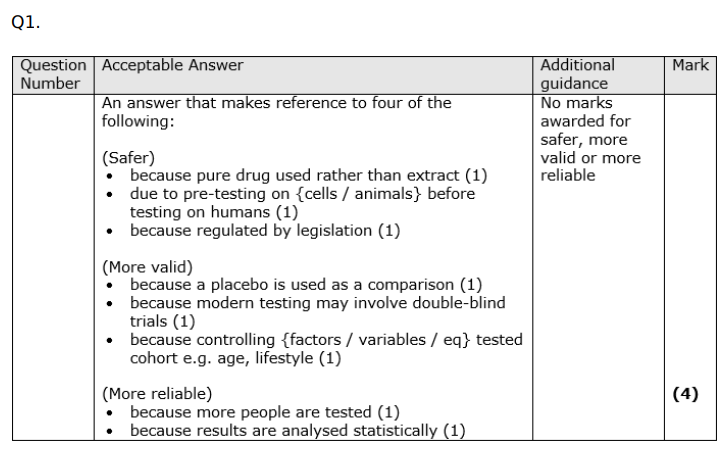
Explain how these seeds were selected for storage in the seed bank. (3)
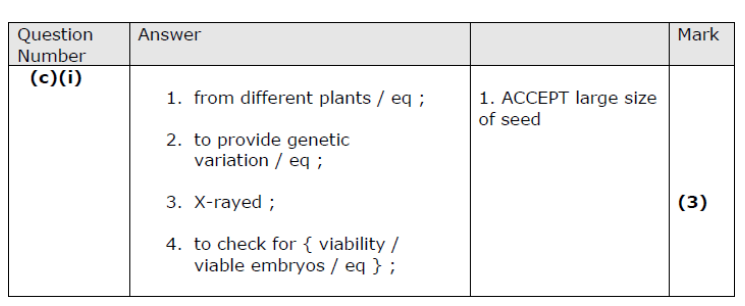
Describe the conditions used for the storage of seeds in seed banks. Explain why seeds are stored in these conditions. (3)
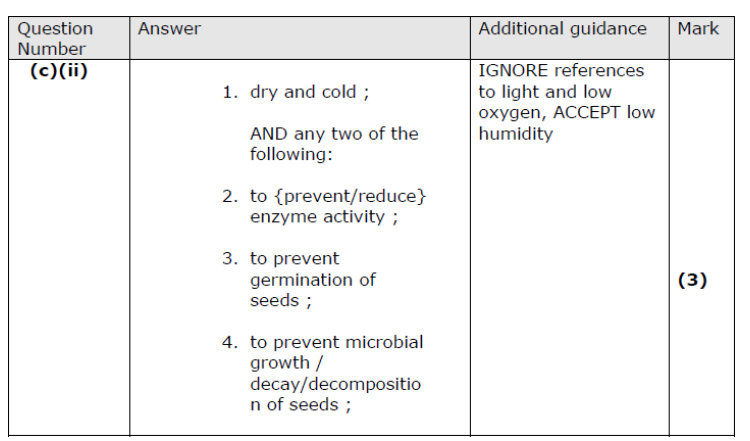
Compare and contrast this drug testing protocol with that used by William Withering he tested digitalis soup. (3)
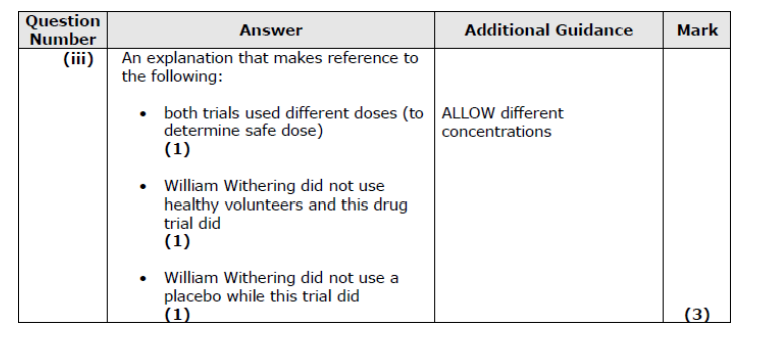
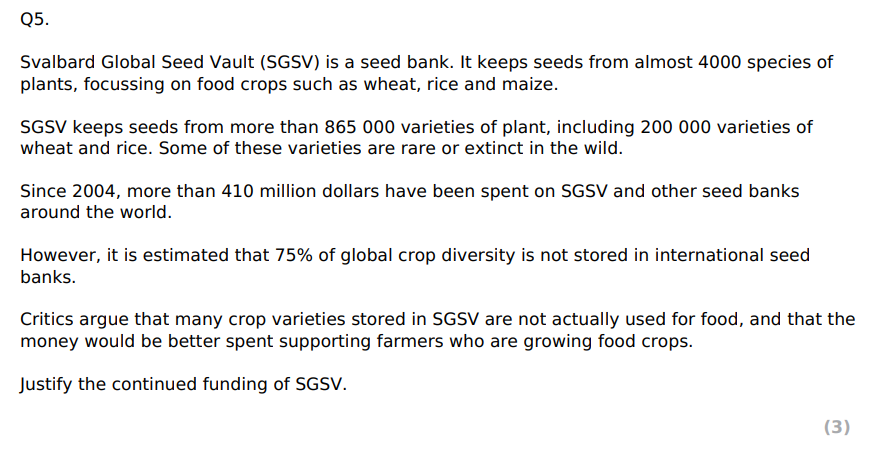
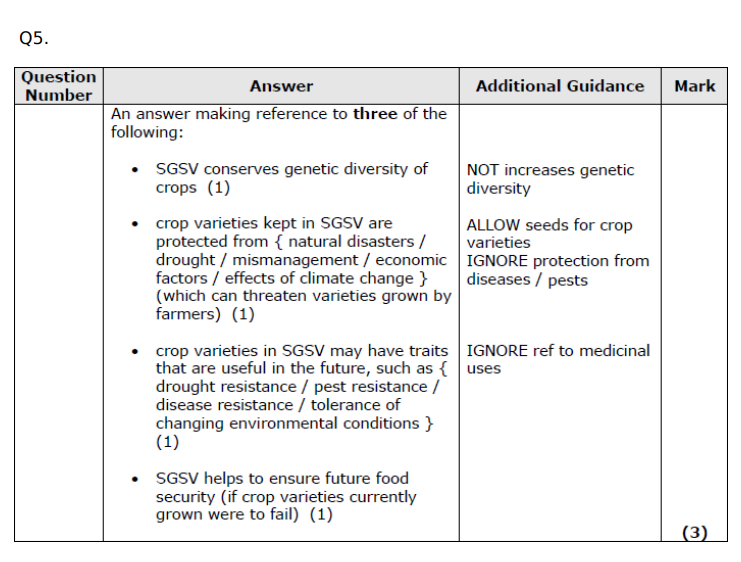
Explain the importance of nitrate ions for the growth of plants. (2)
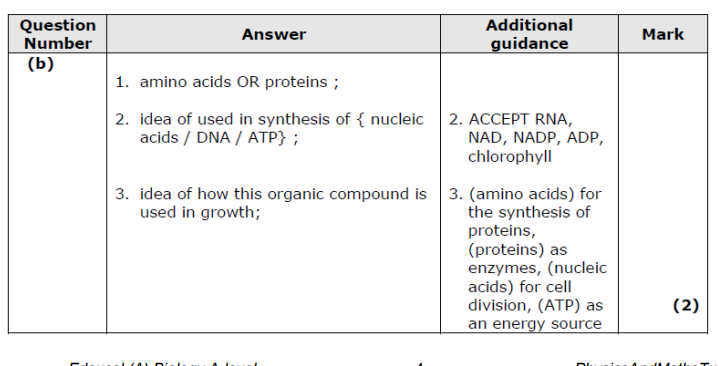
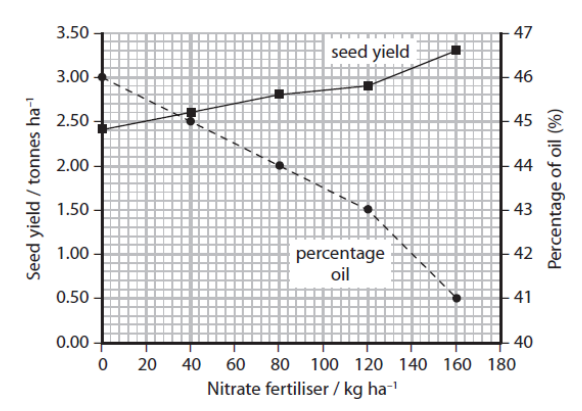
Suggest how the scientist could have ensured that this investigation was valid. (4)
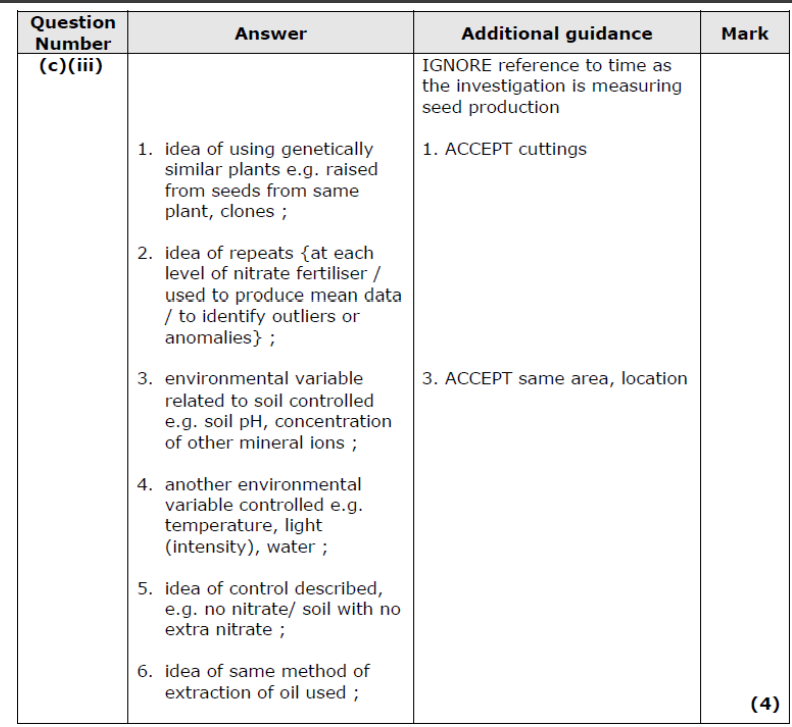
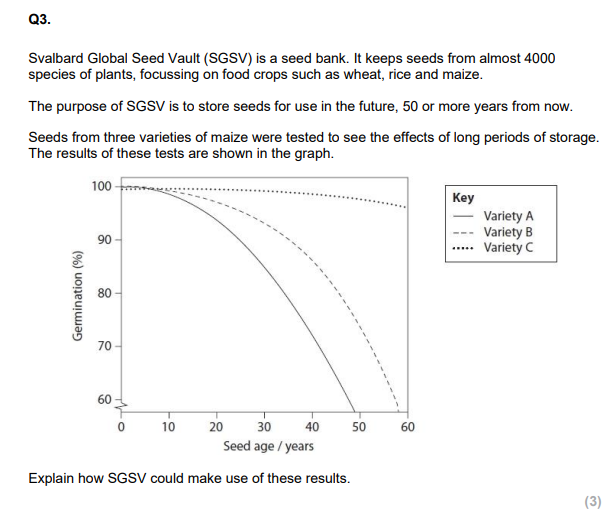
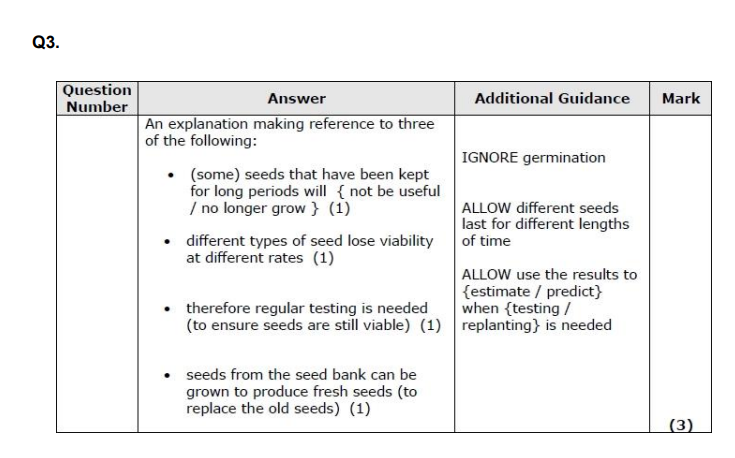
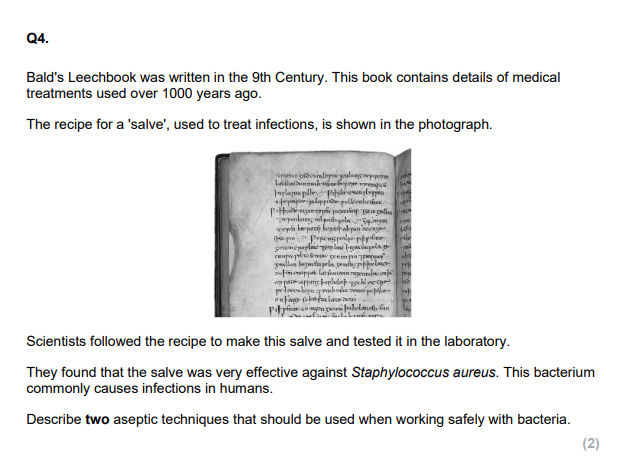
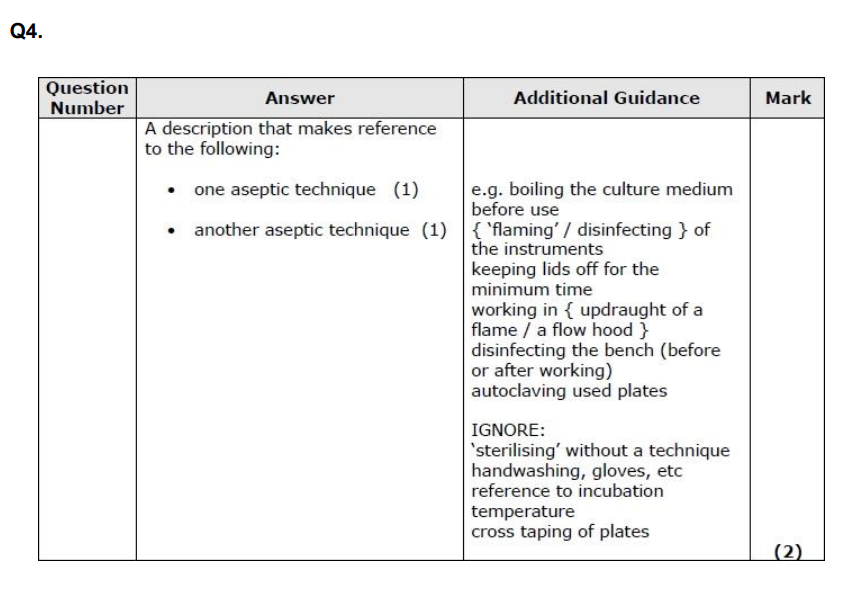

amino acids for growth
suitable pH for bacterial enzymes
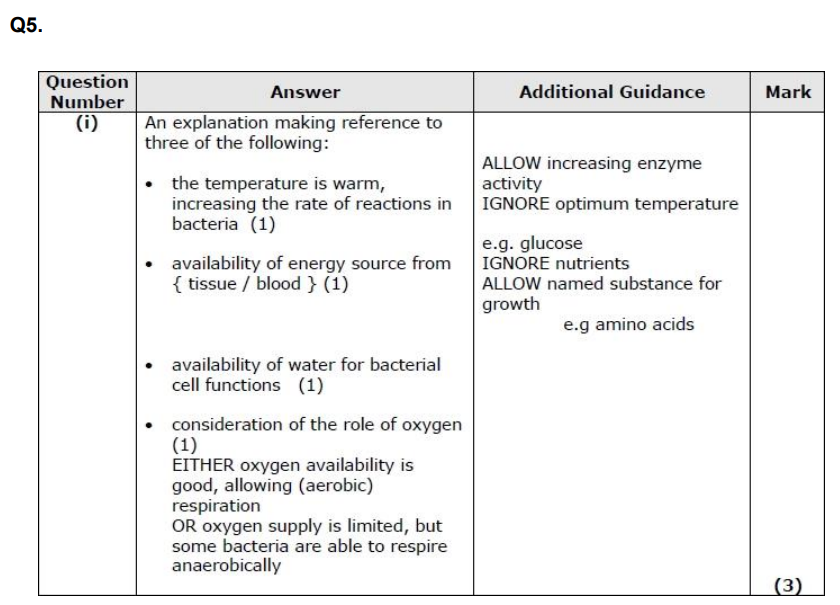

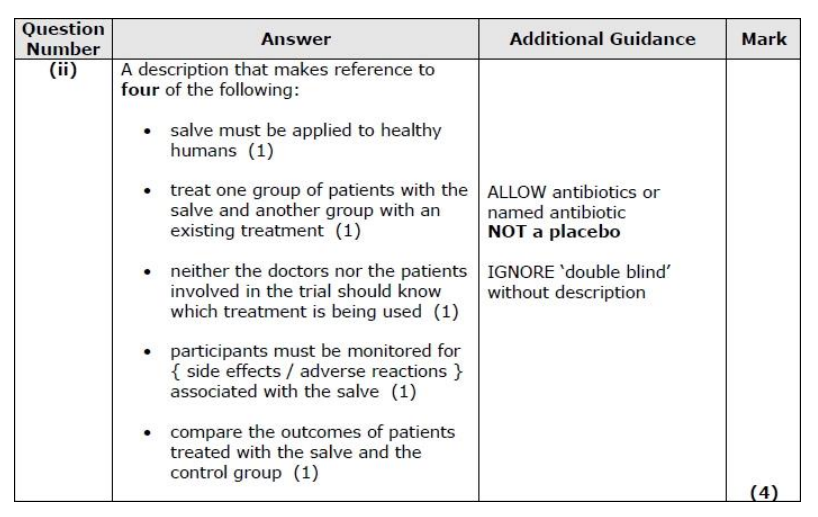
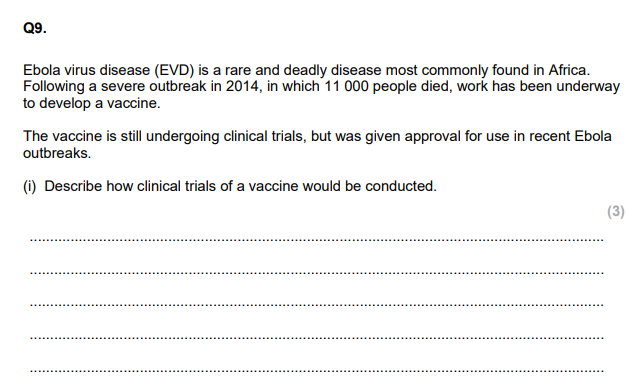

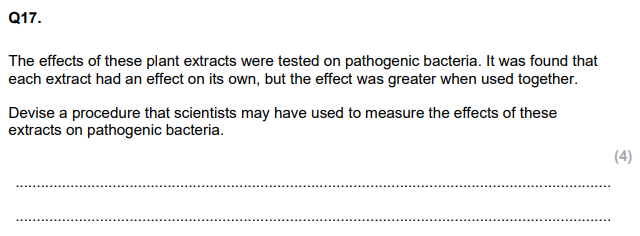
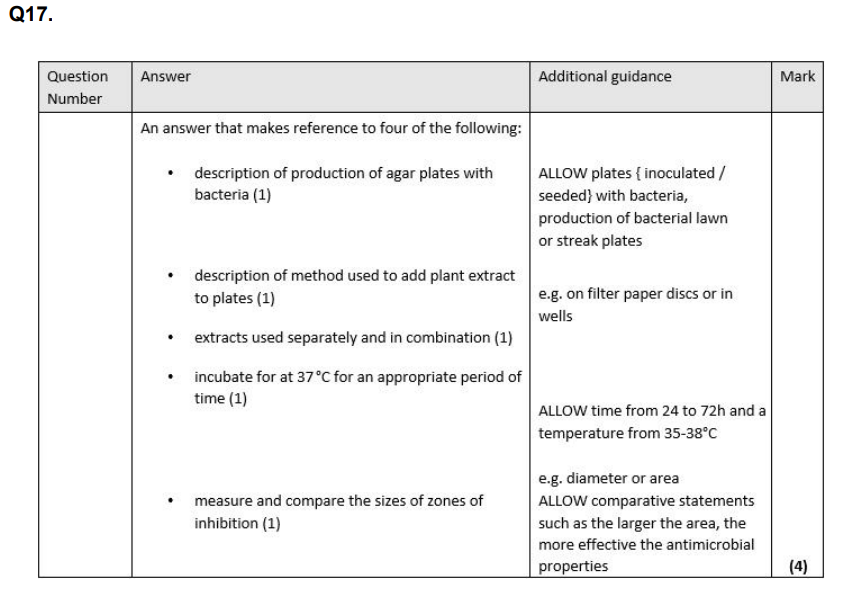
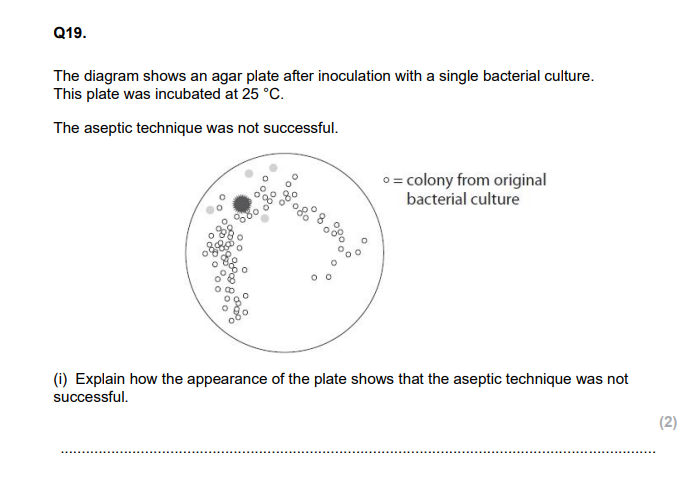
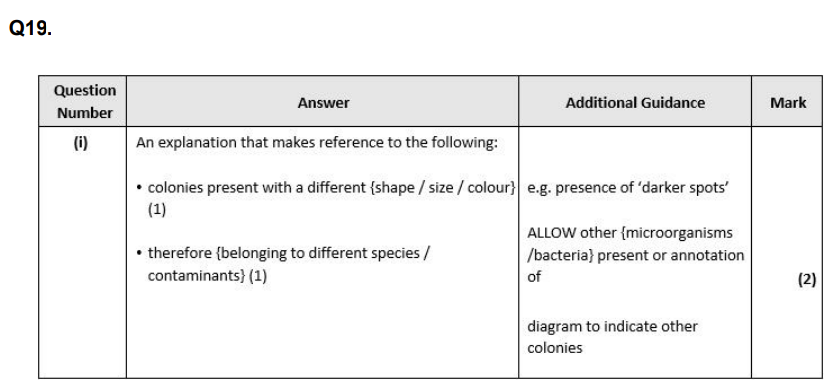
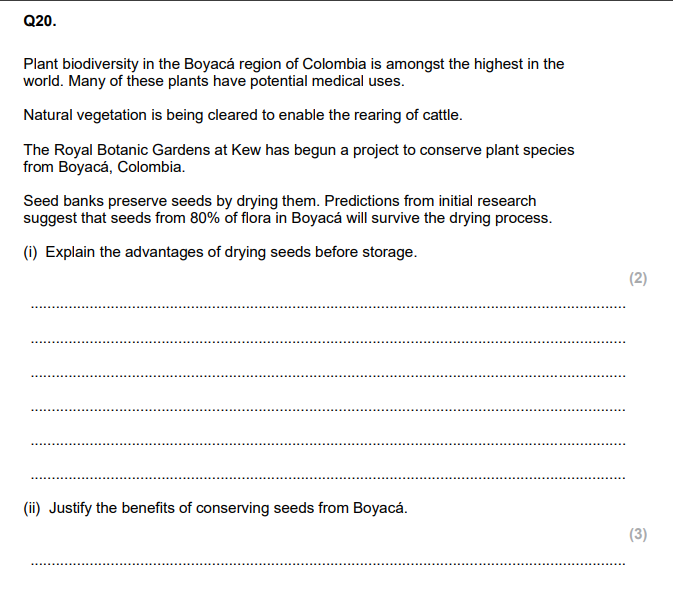
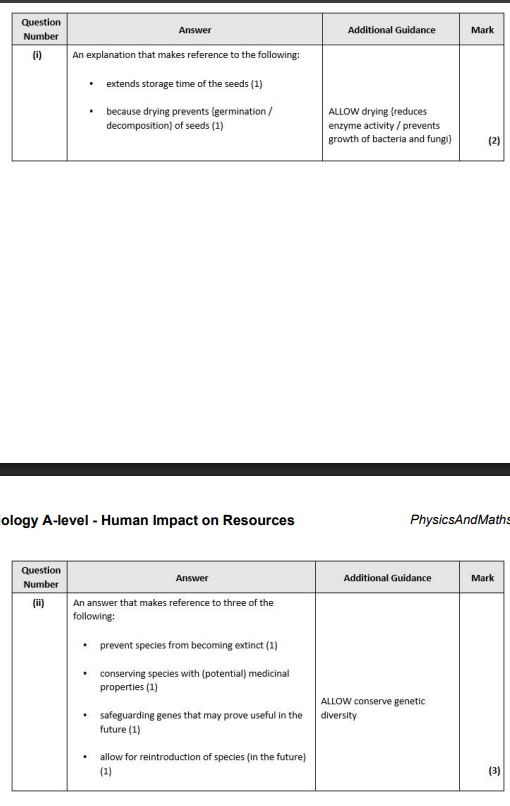
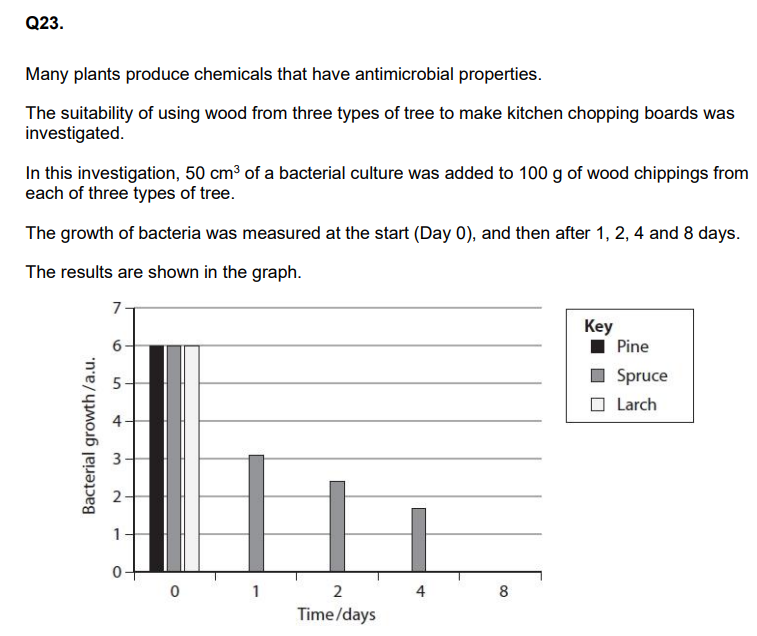
It was concluded from this investigation that spruce caused bacterial growth to decrease at a constant rate after the first day. Criticise this conclusion. (2)
(iii) Explain how this investigation could be improved to provide additional data to determine whether pine or larch have greater antimicrobial properties. (4)
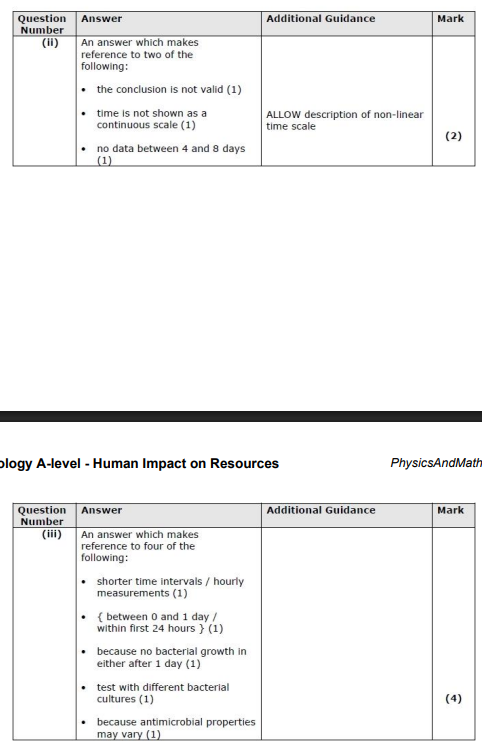
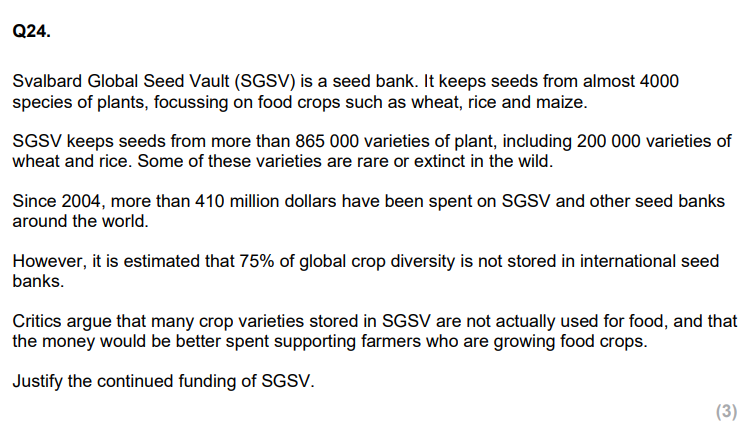
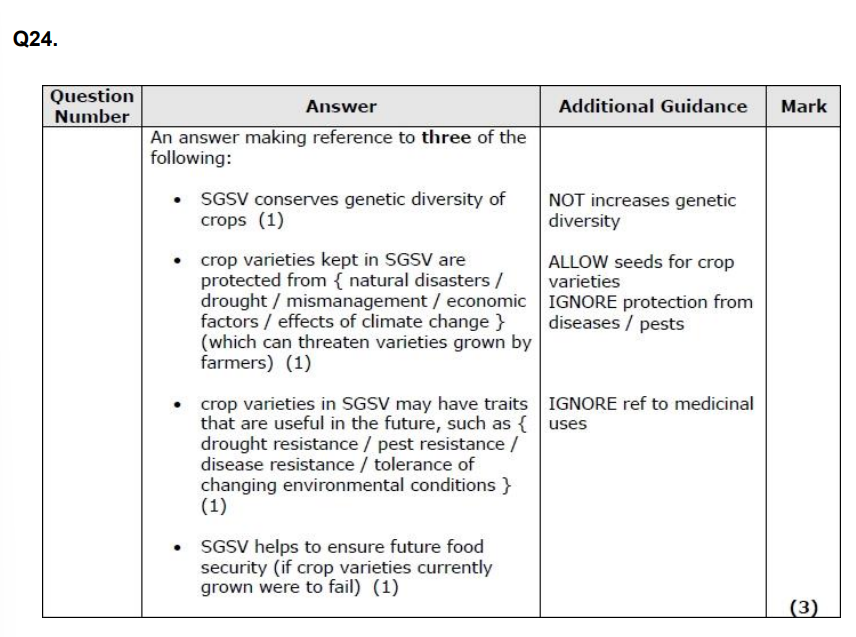
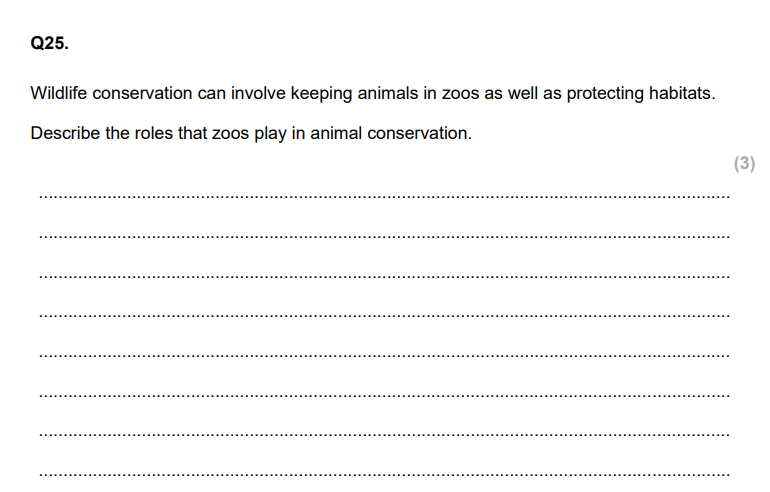
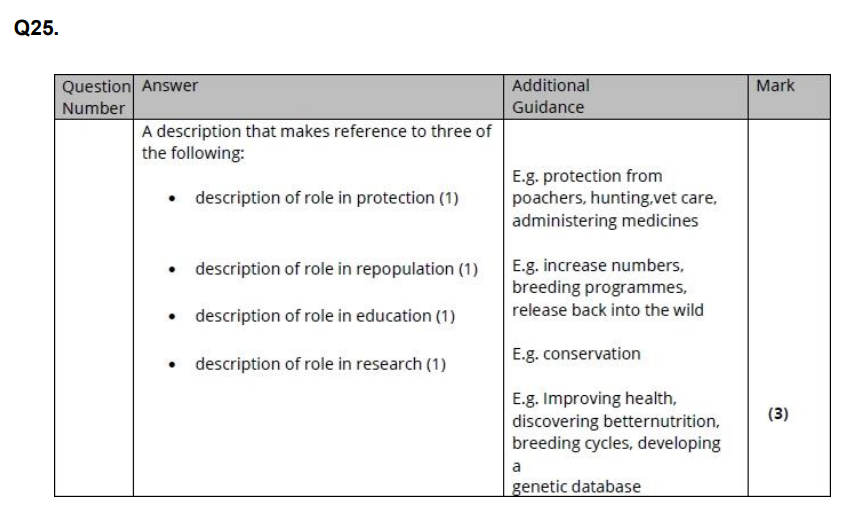
Give two functions of the Golgi apparatus. (2)
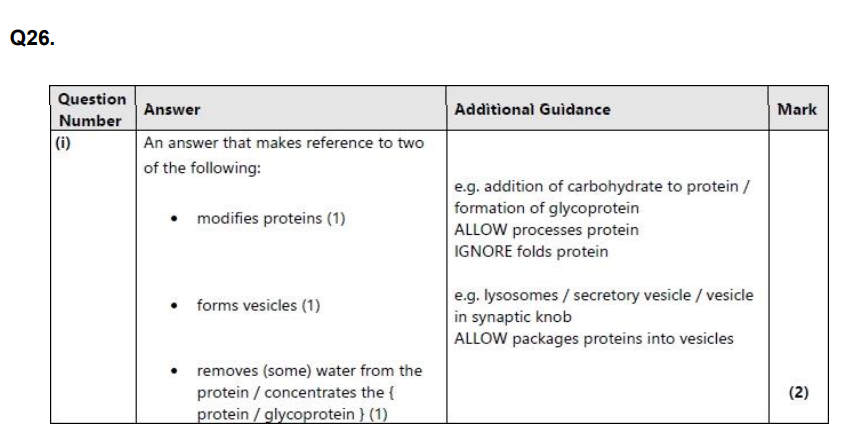
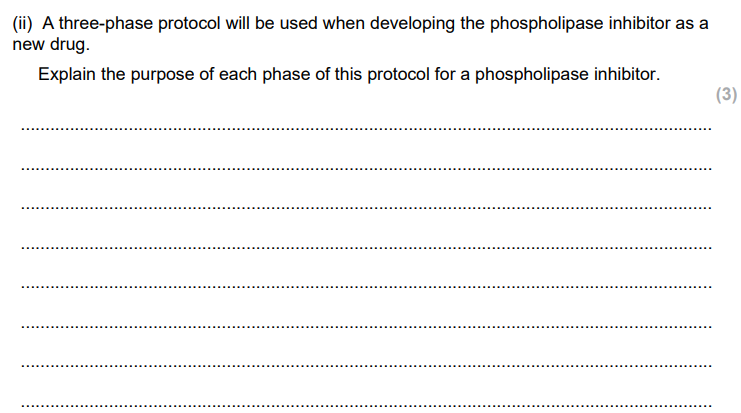
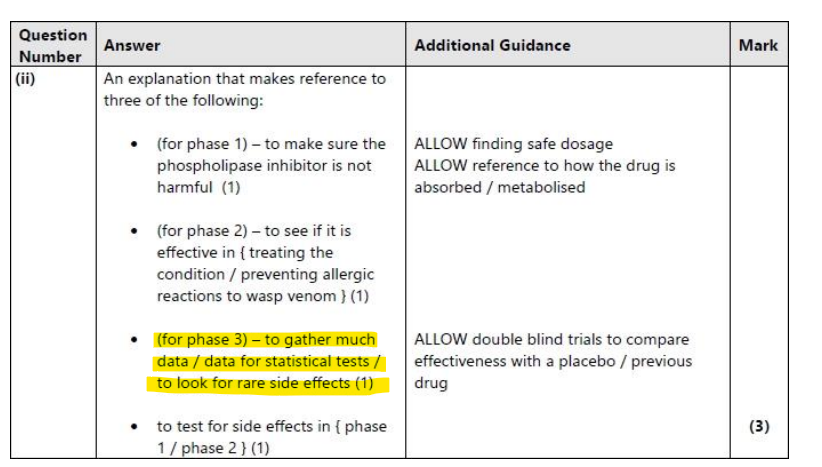
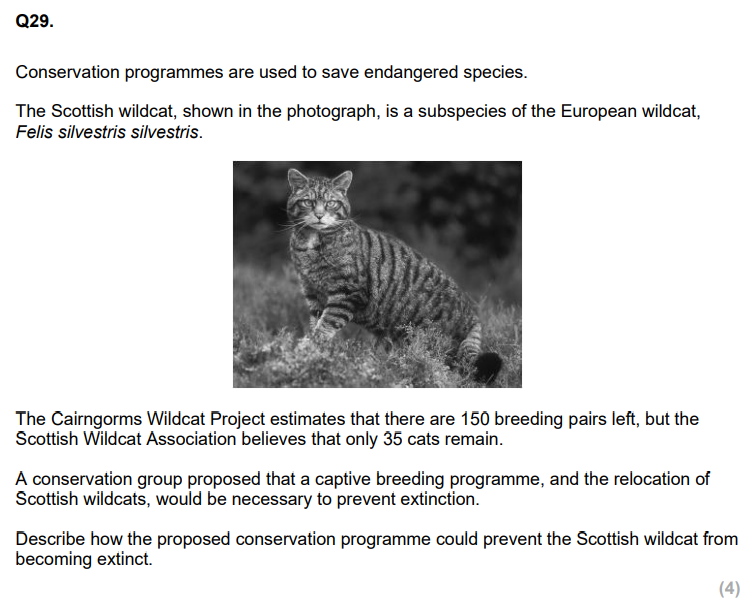
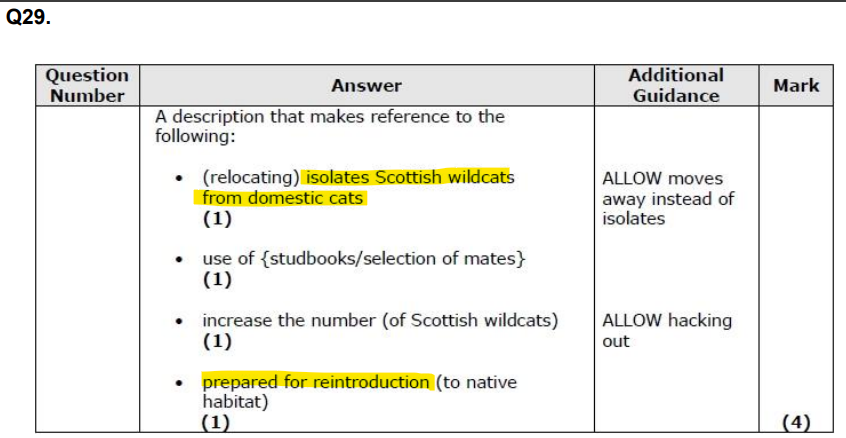
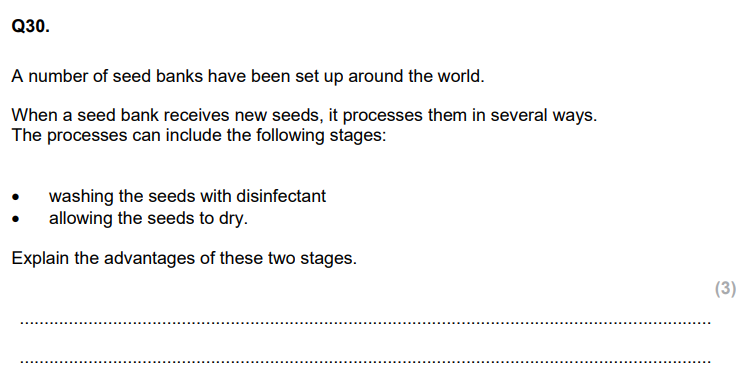
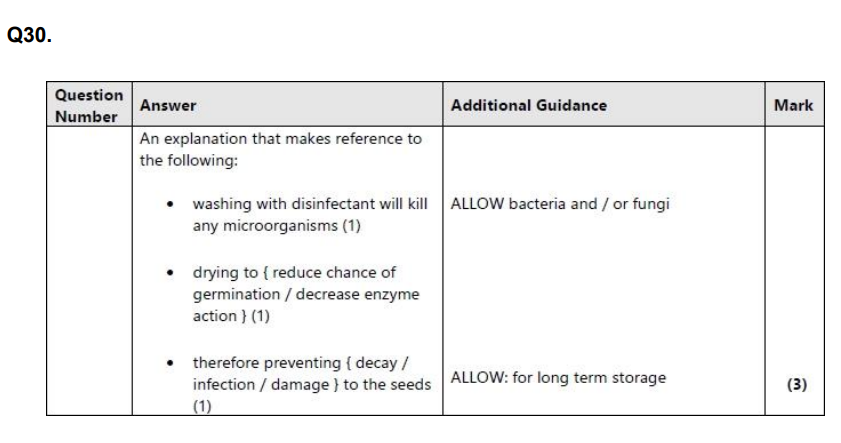
Describe the structure of starch. (3)
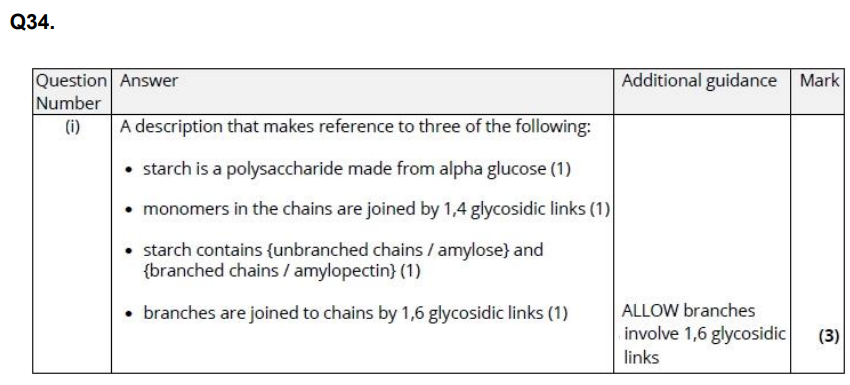
Plant-based products provide a sustainable alternative to oil-based plastics. A sustainable alternative is a plastic material that contains more than 30% plant-based polymers. Potato starch is a source of these polymers.
Explain why this plastic material is only partially sustainable. (2)

Describe what is meant by biodiversity. (2)
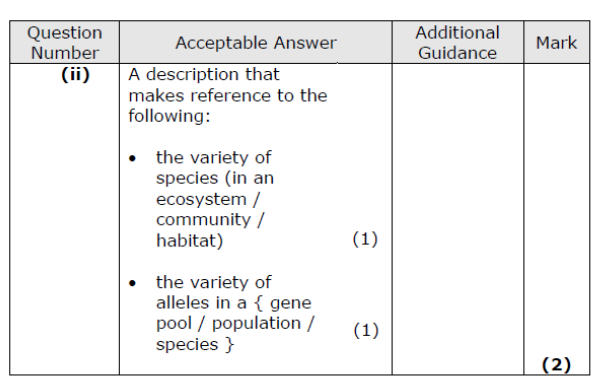
Explain how the biodiversity of lemurs in two different parts of Madagascar could be compared. (3)
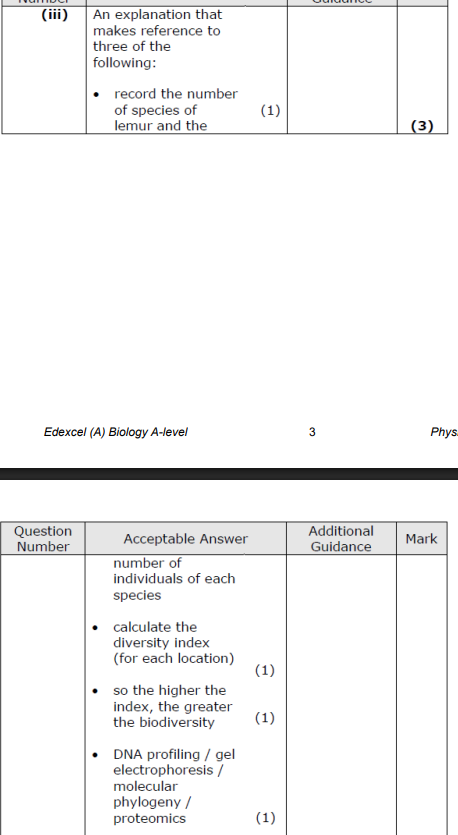
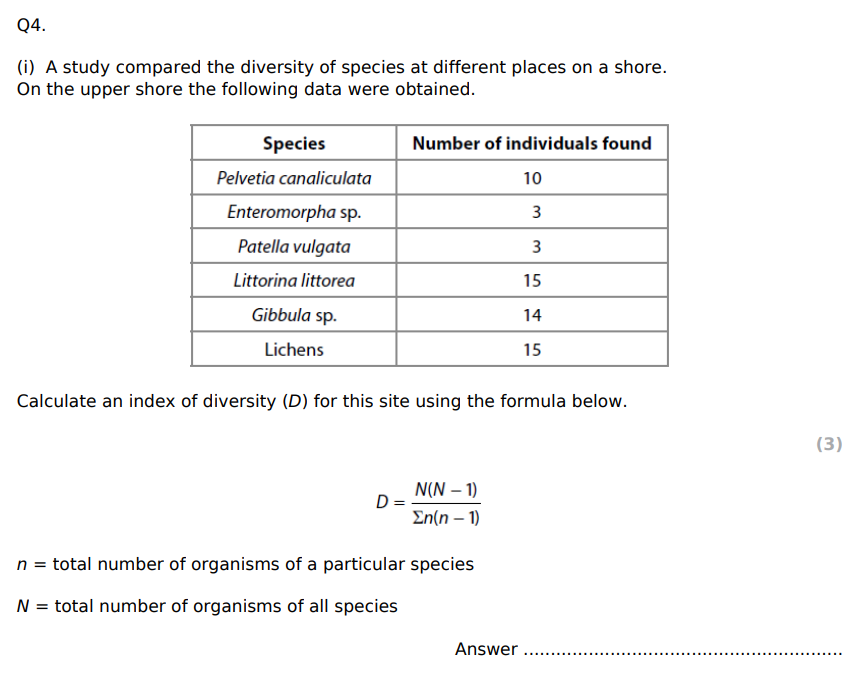

Describe the process by which the scientific community critically evaluates new theories. (3)
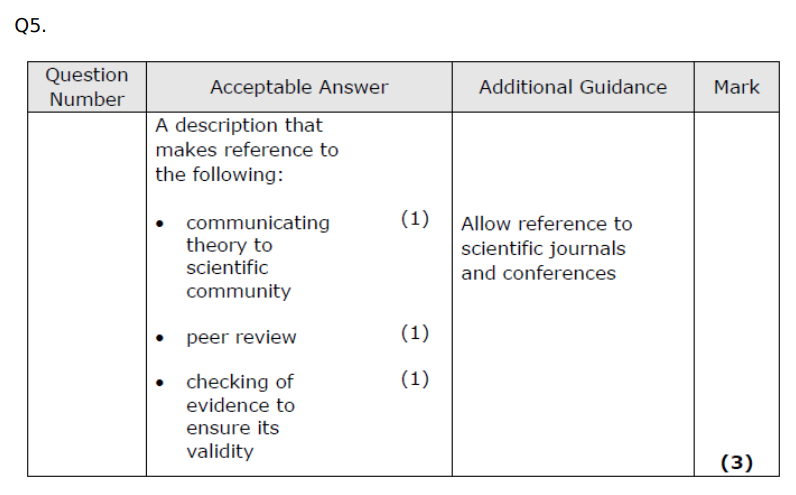
Suggest reasons why the two species do not interbreed. (3)

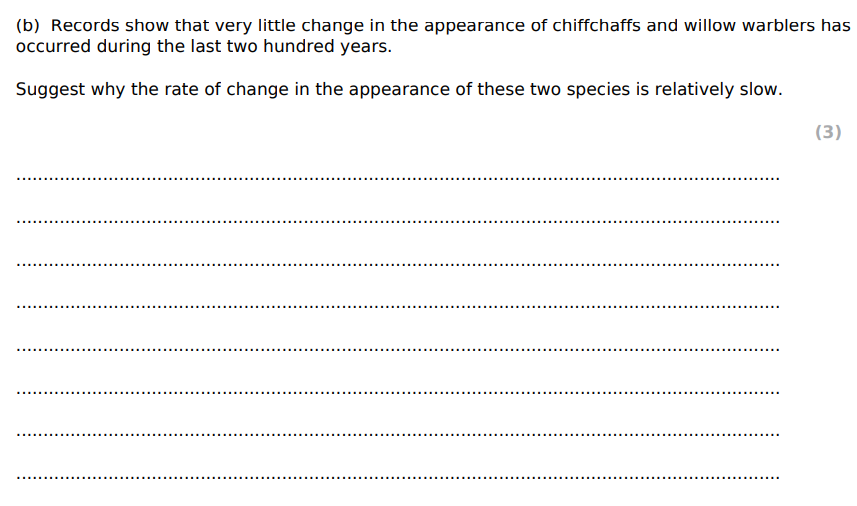
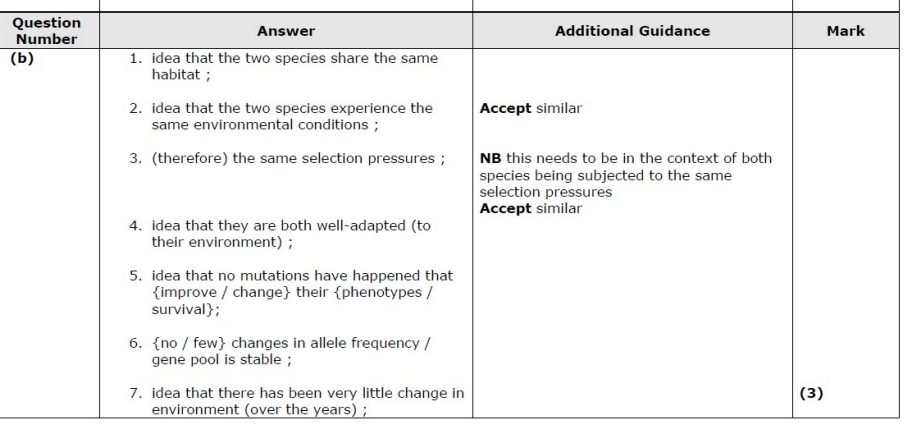
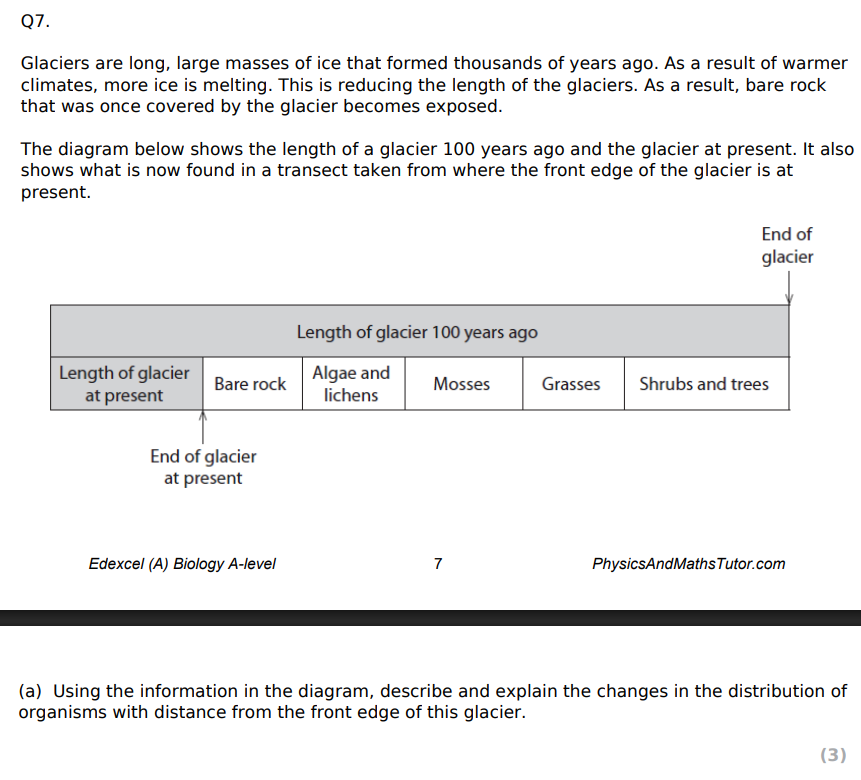
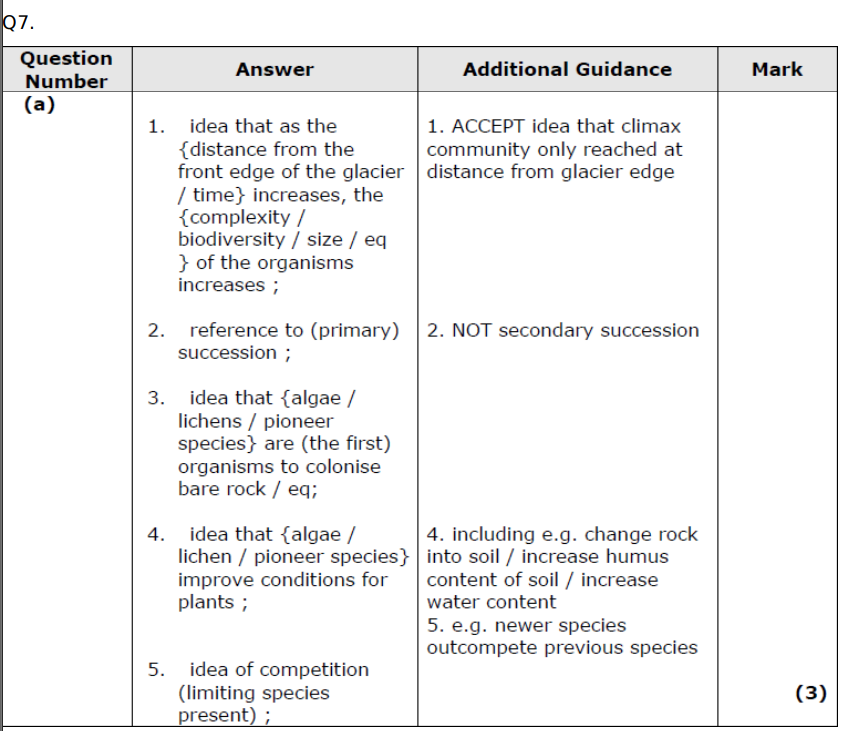
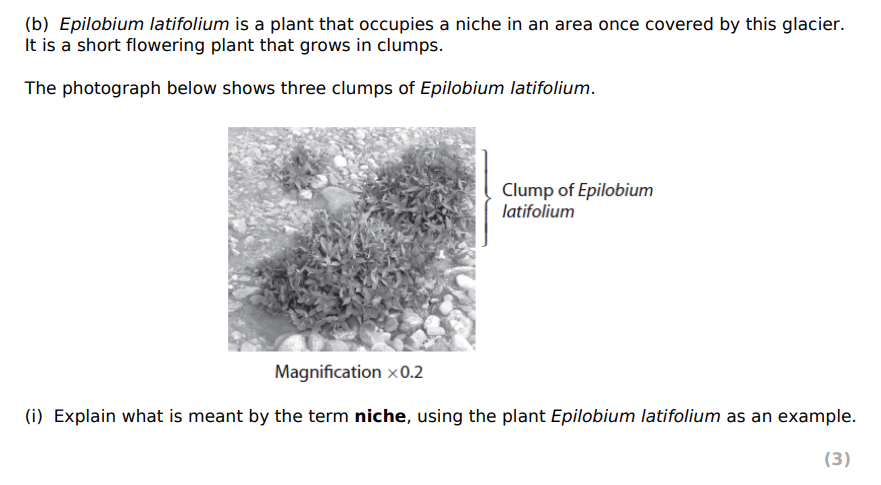
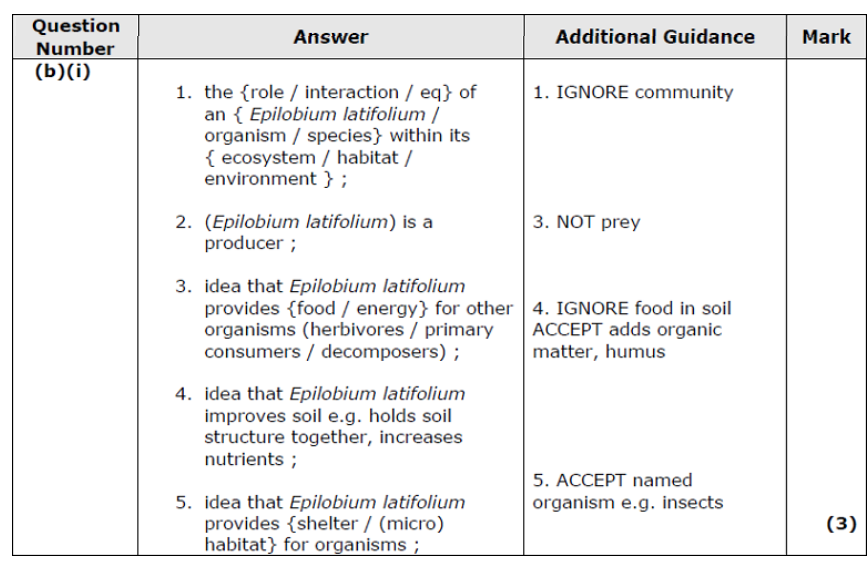
Describe how to carry out a study of the distribution of Epilobium latifolium from the front edge of this glacier. (4)
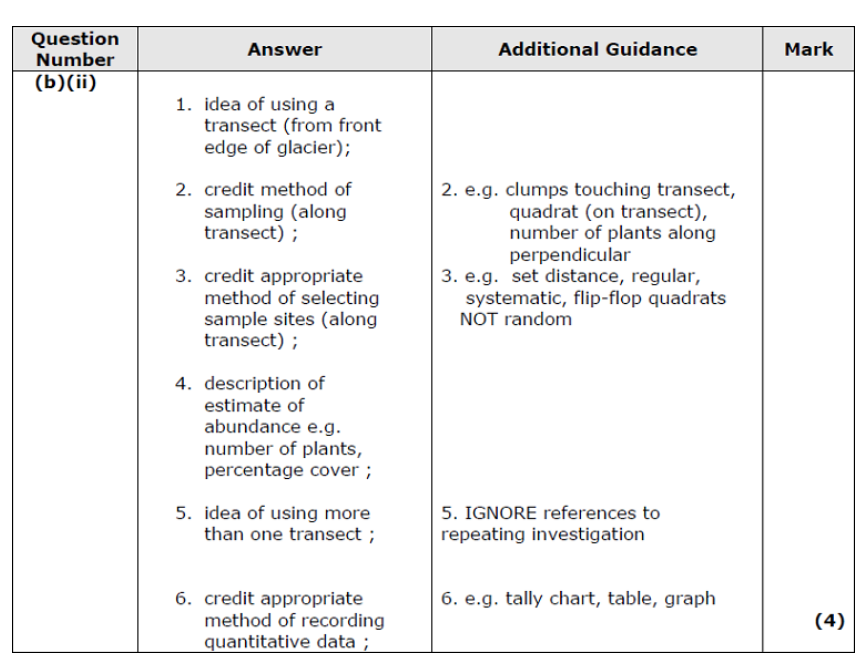
Suggest one abiotic factor that might affect the abundance of Epilobium latifolium and describe how this factor could be measured. (3)
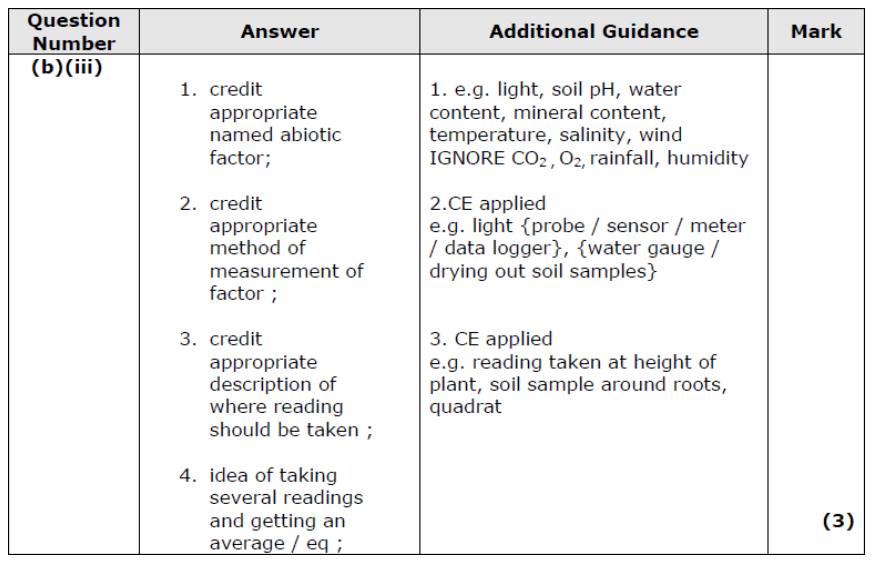
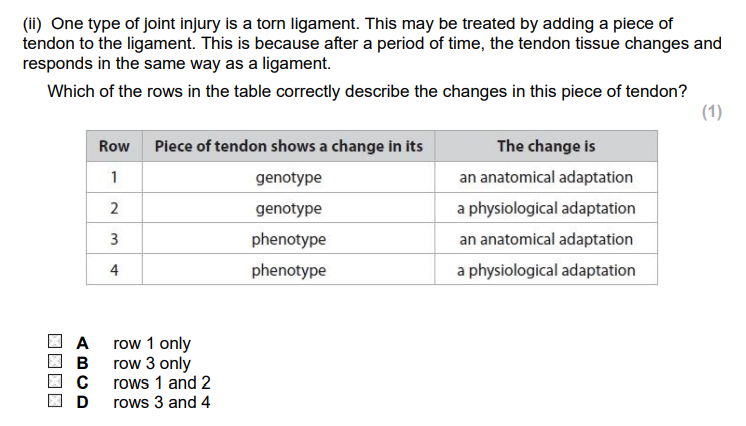
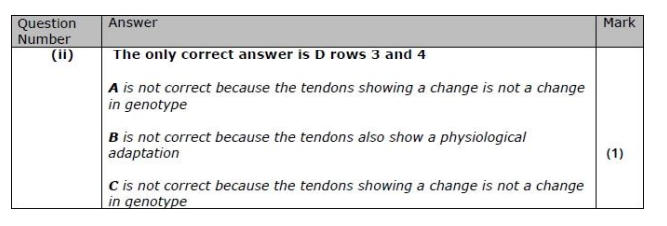
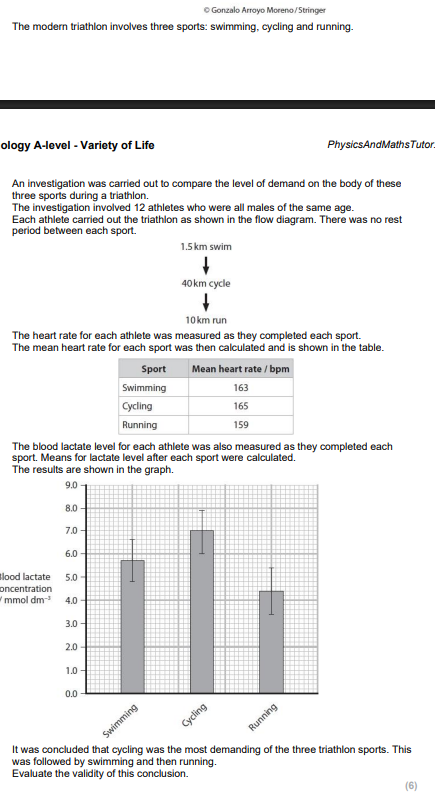
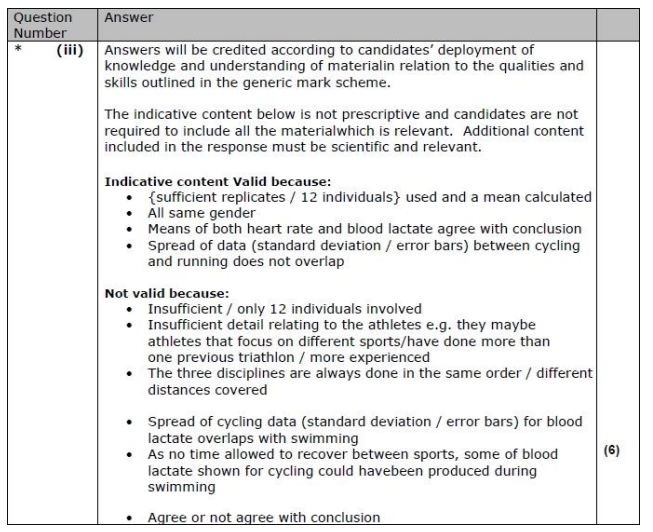
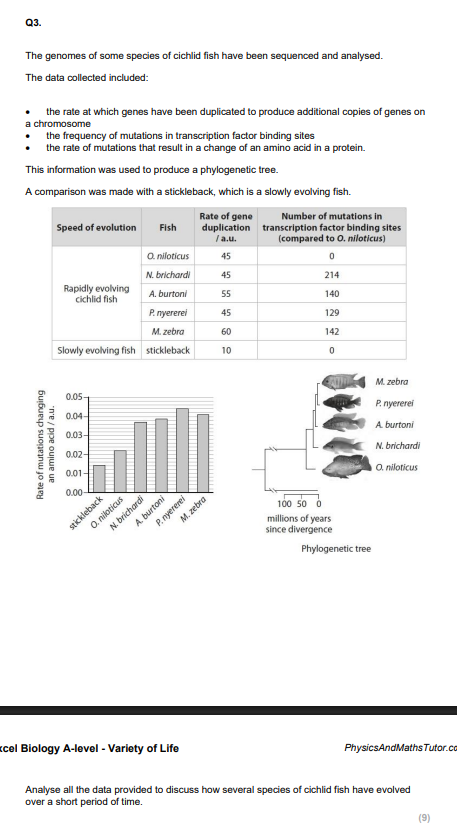
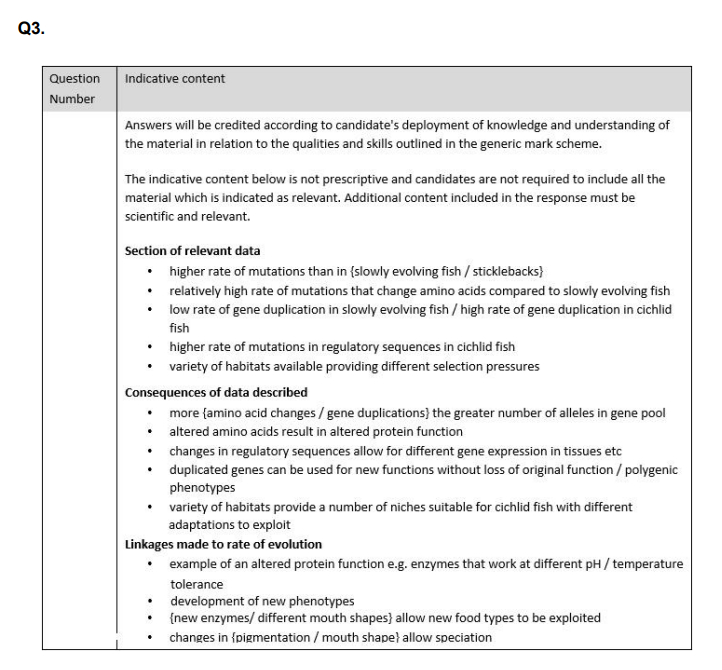
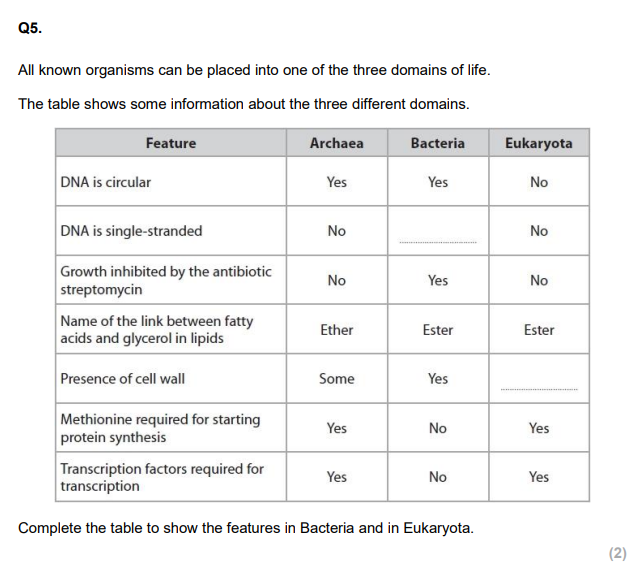

State what is meant by the term allele. (1)

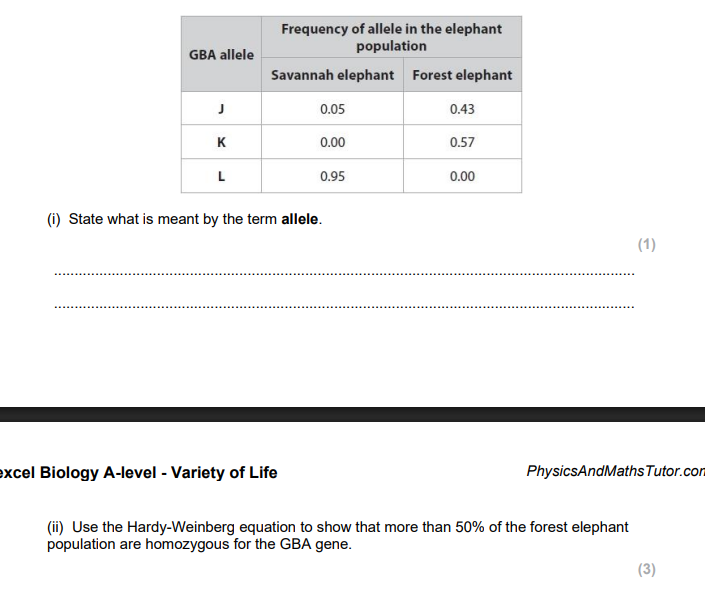
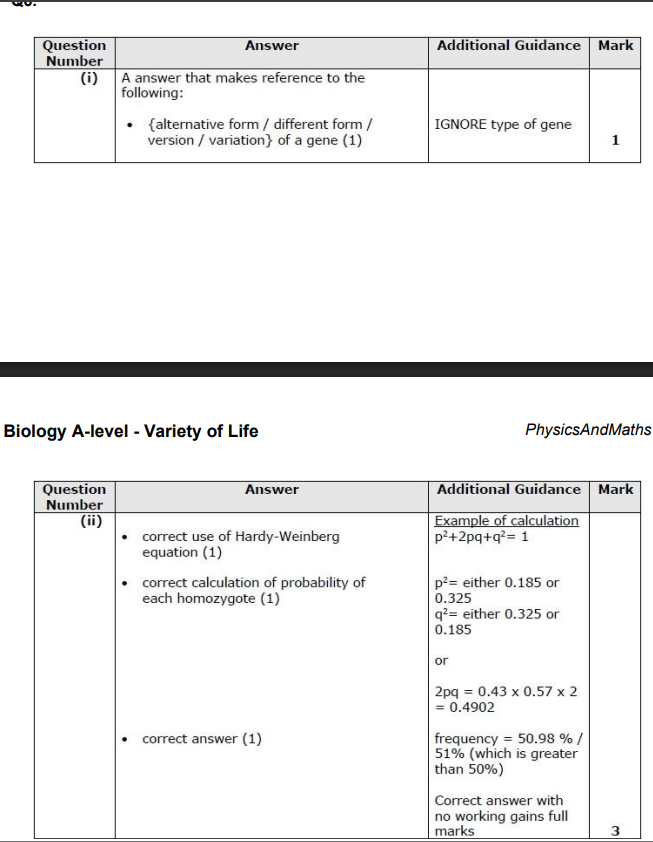
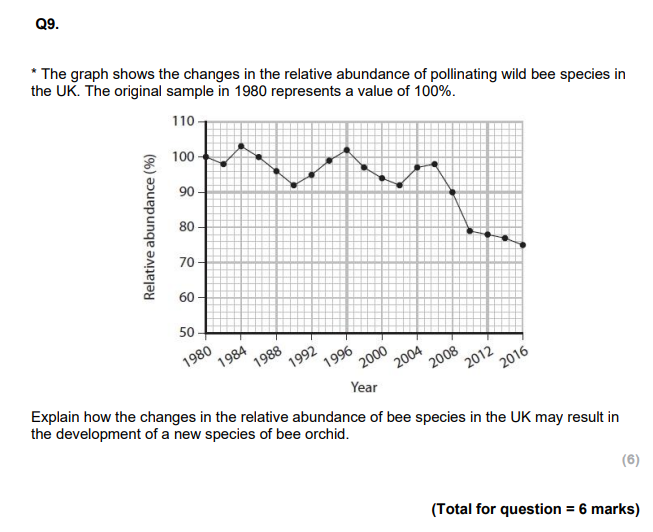
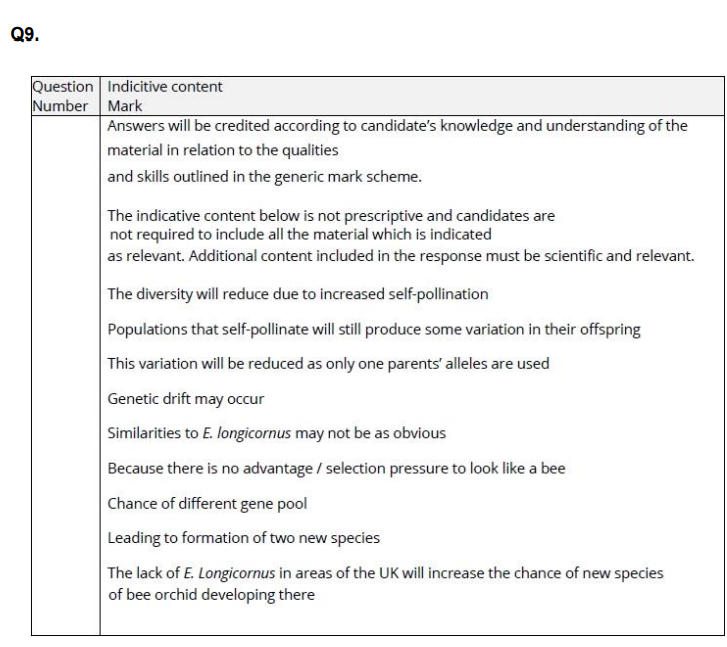
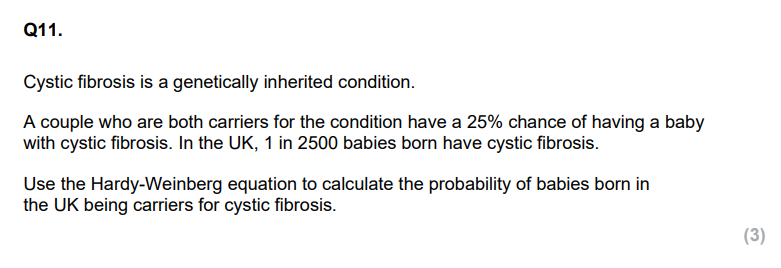
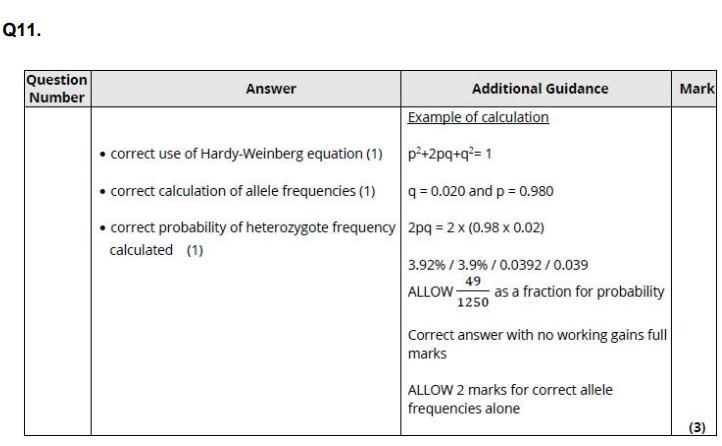
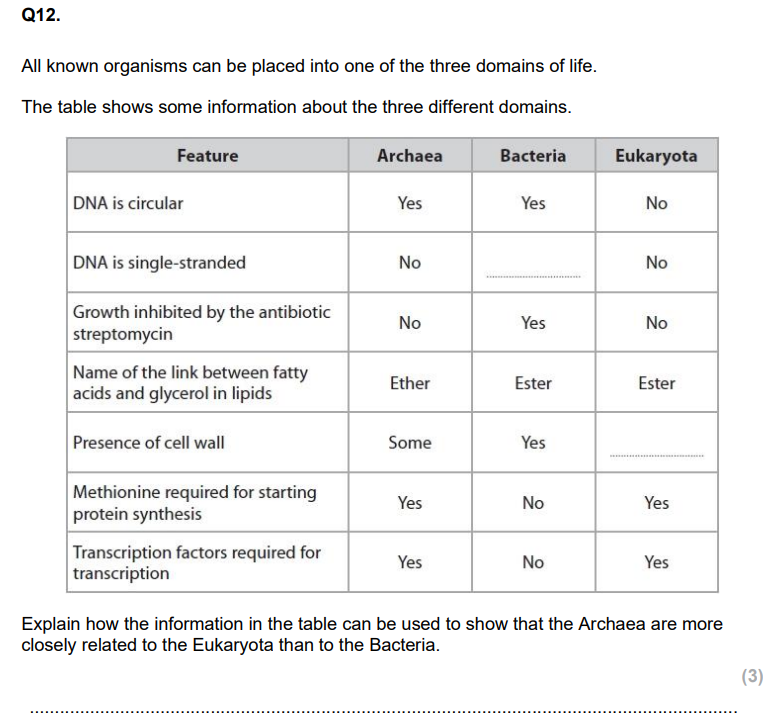
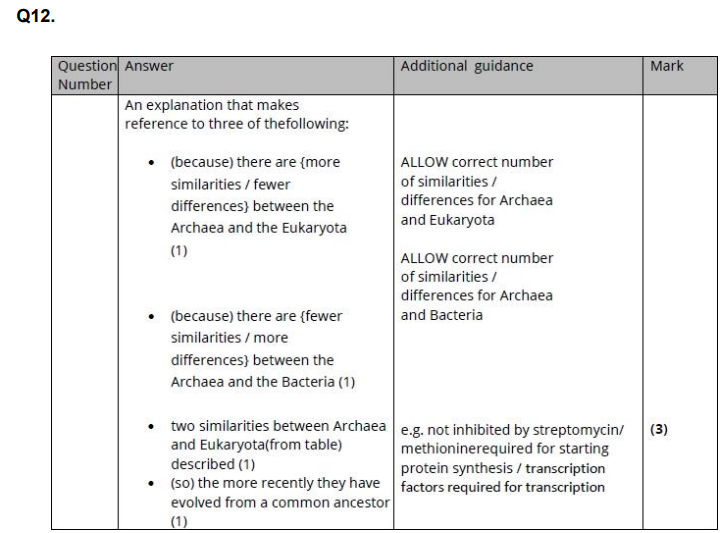
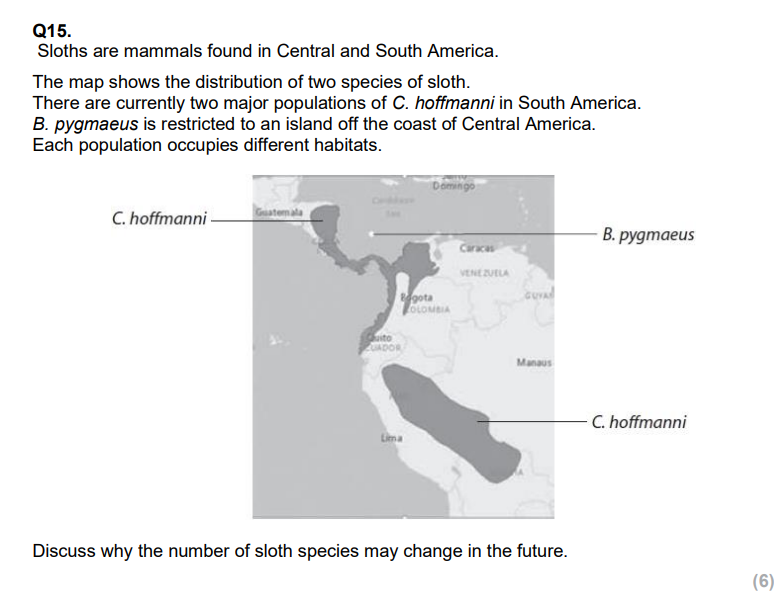
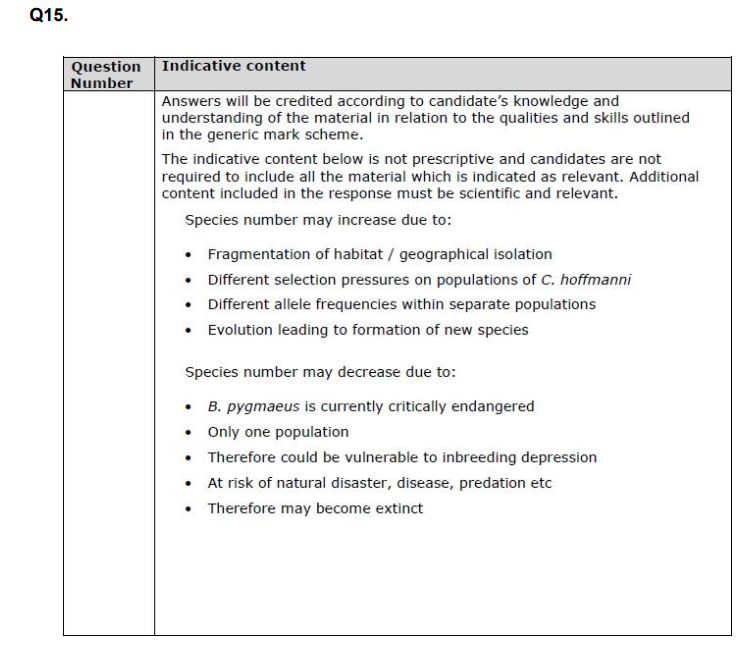
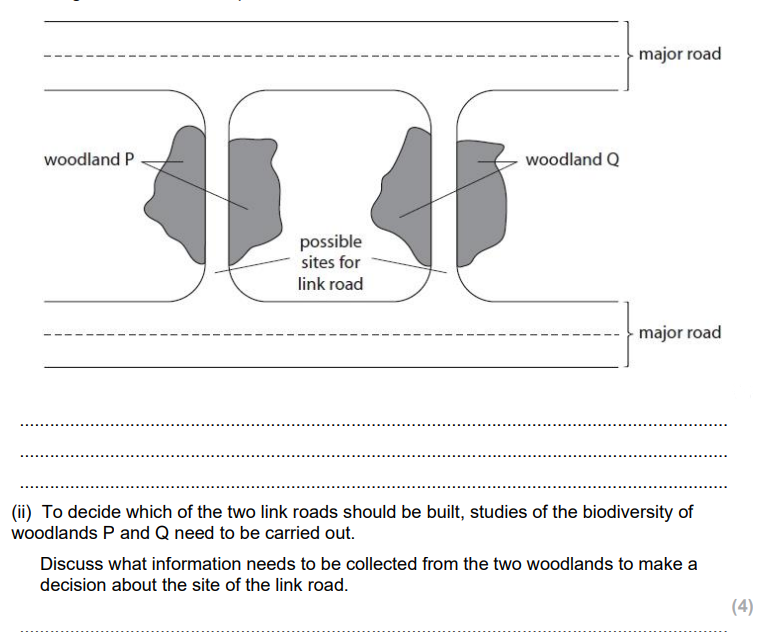
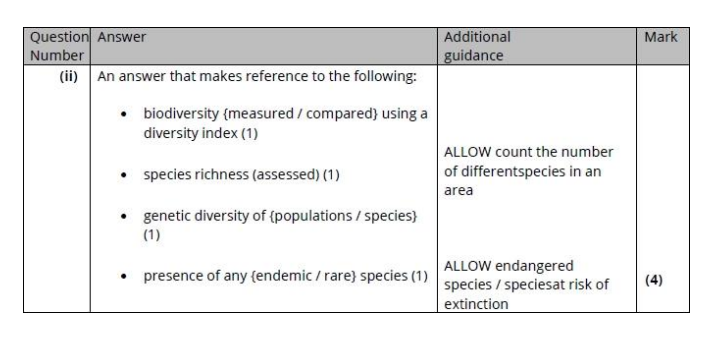
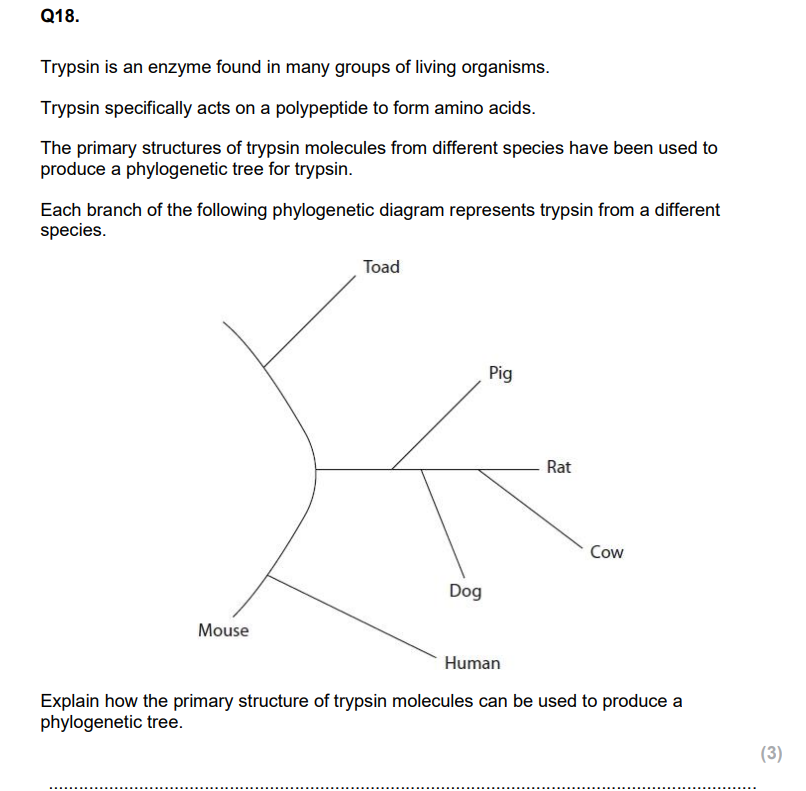
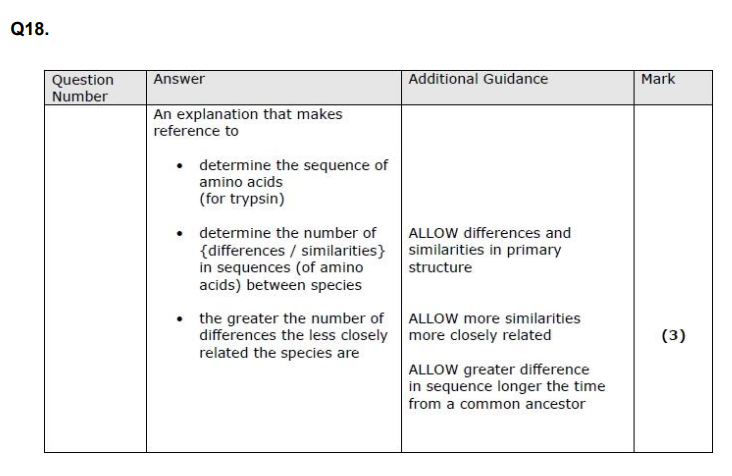
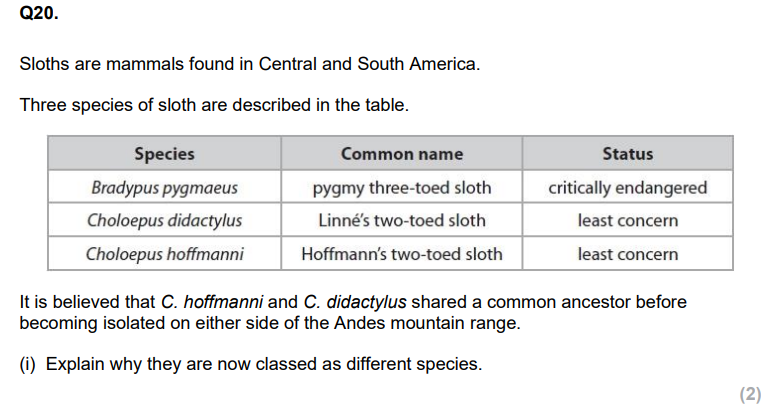



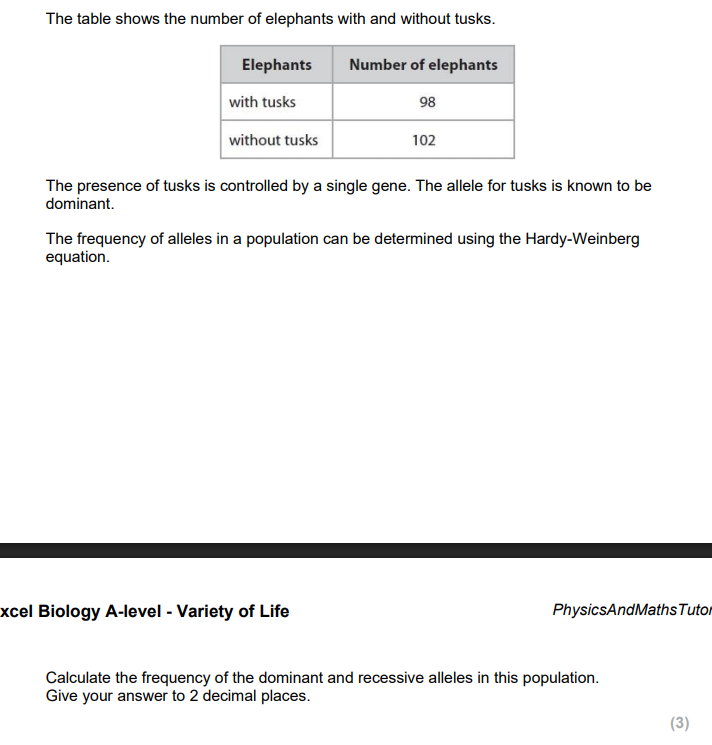
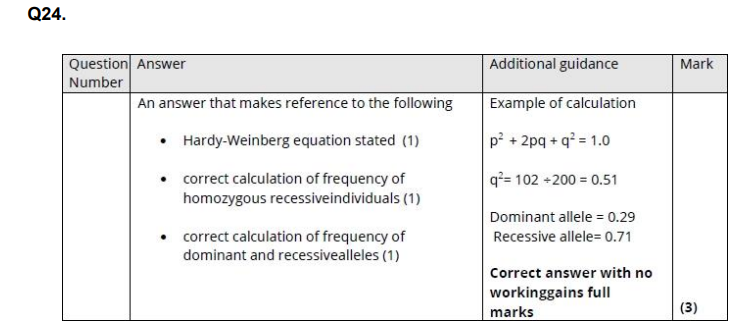
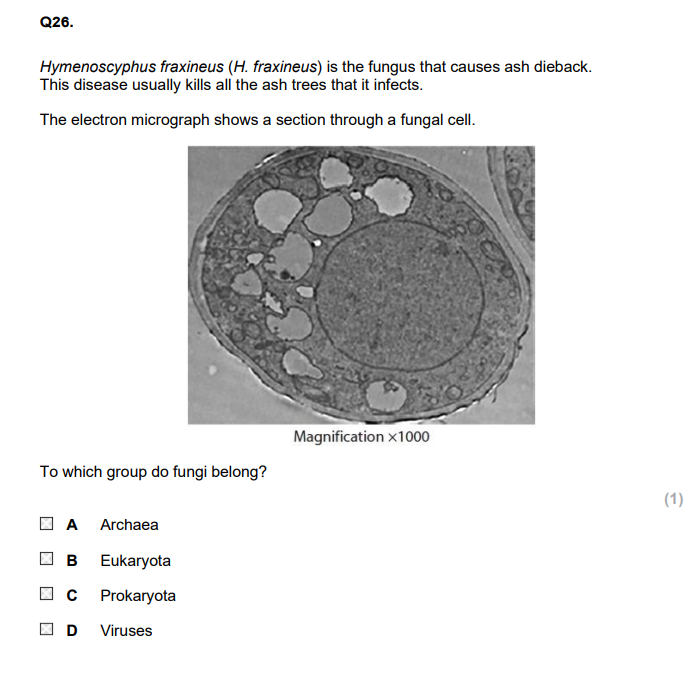
B
Describe the features that could be used to identify the prokaryotic cells in the blood sample. (4)
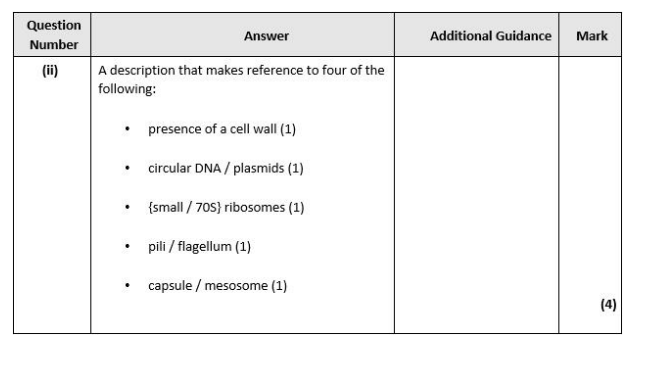
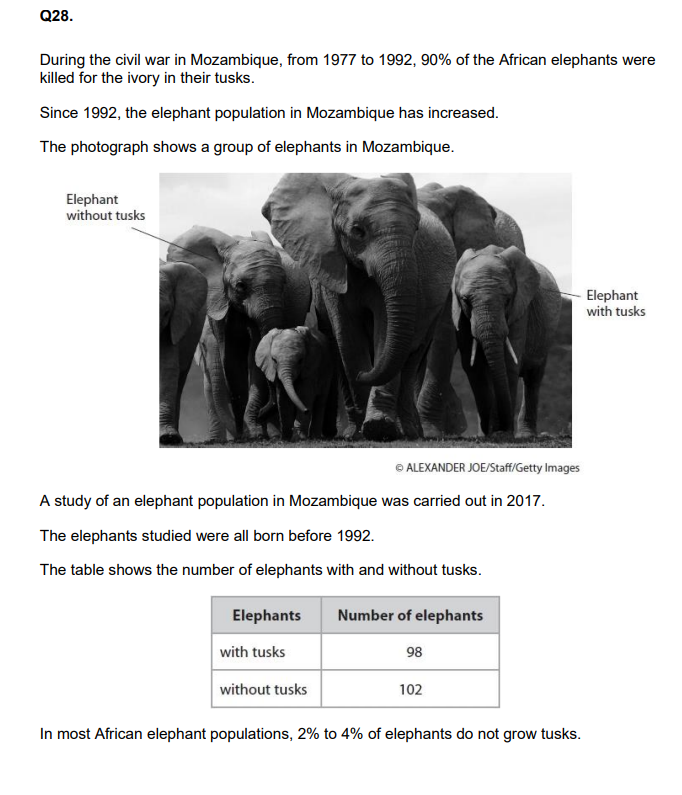
(i) Explain why the percentage of elephants without tusks in Mozambique will probably increase in the future. (3)
(ii) Describe how the Hardy-Weinberg equation can be used to provide evidence for changes in the elephant population in Mozambique. (2)
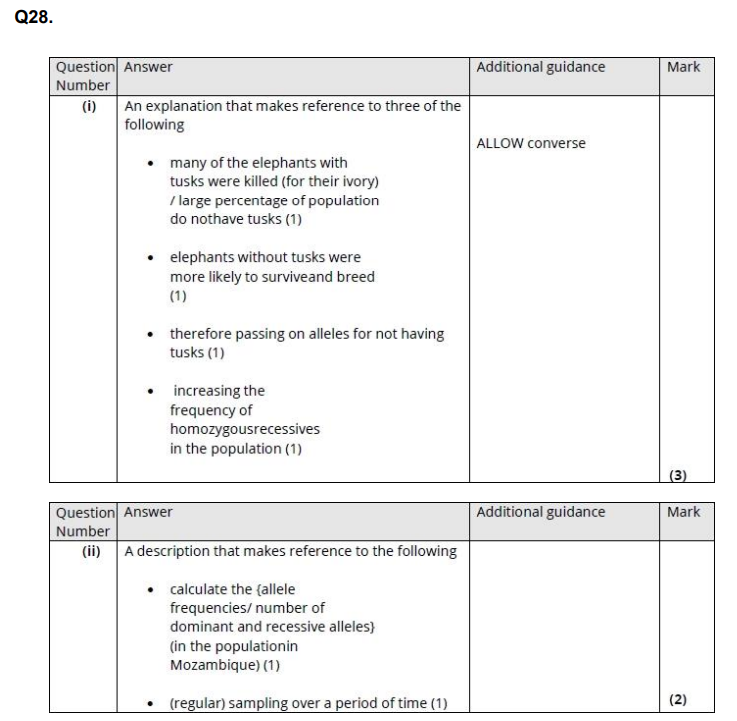
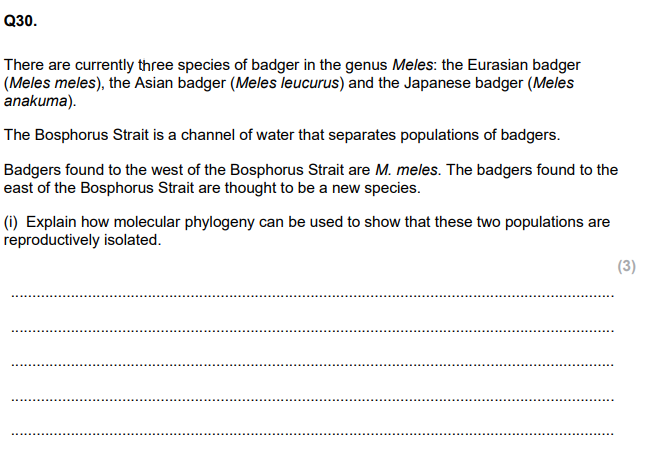
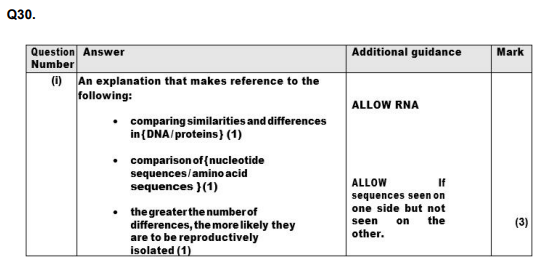
cm mm um nm conversions?
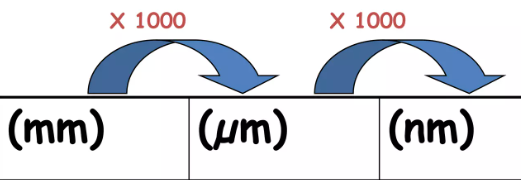
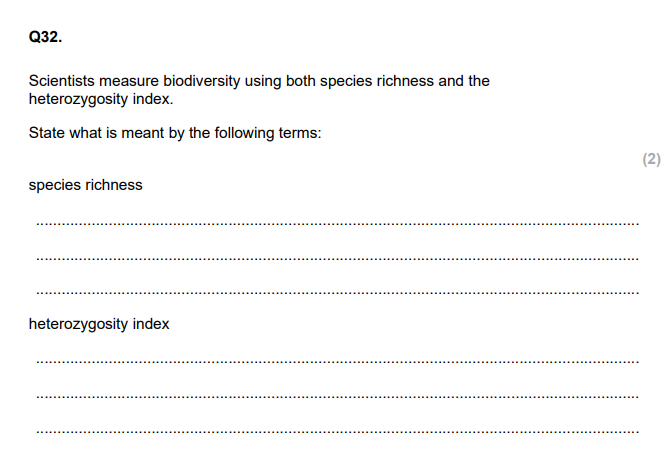
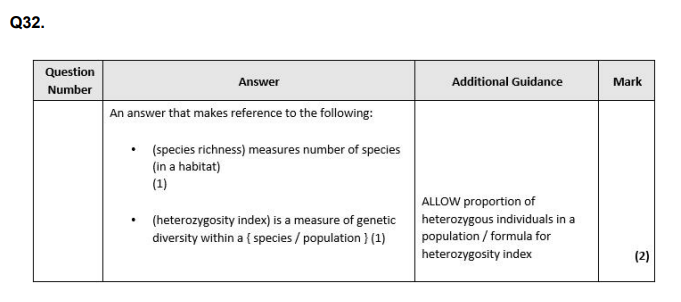
State what is meant by the term species. (1)

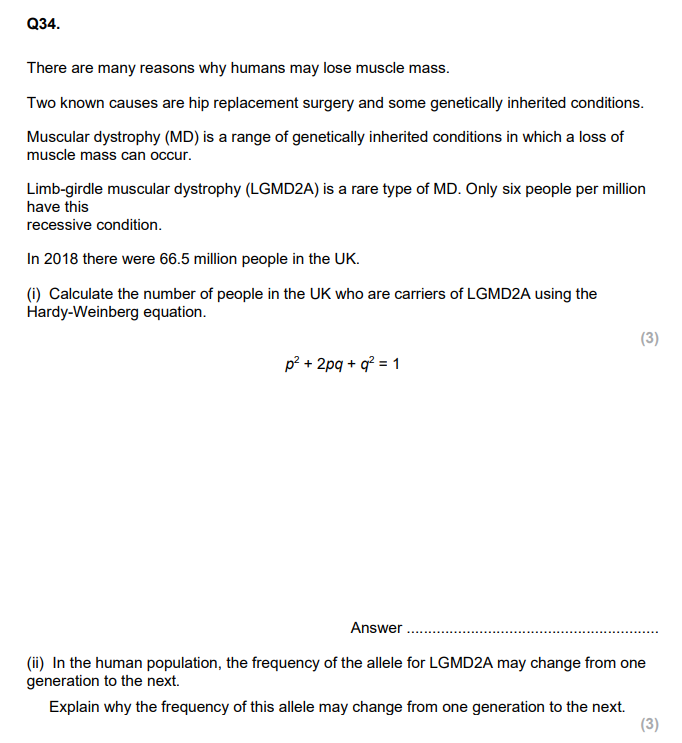
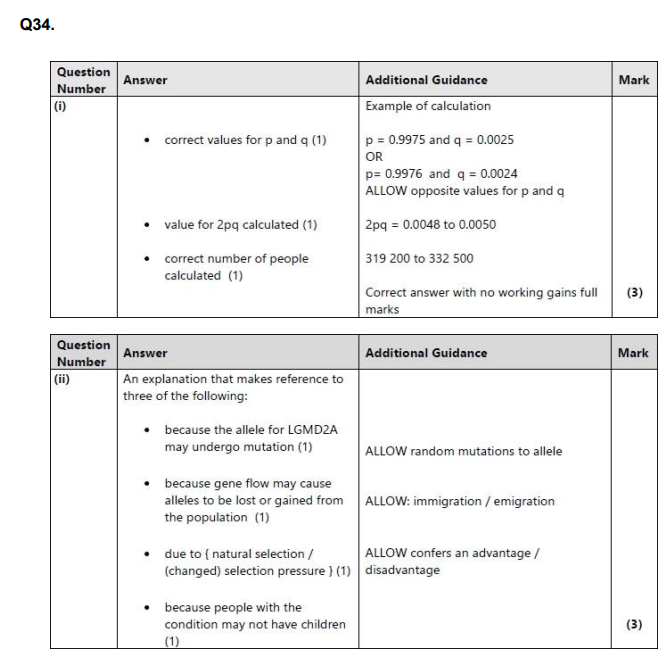
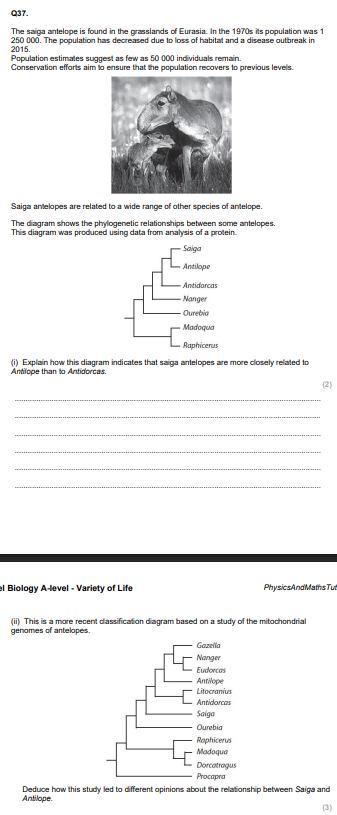

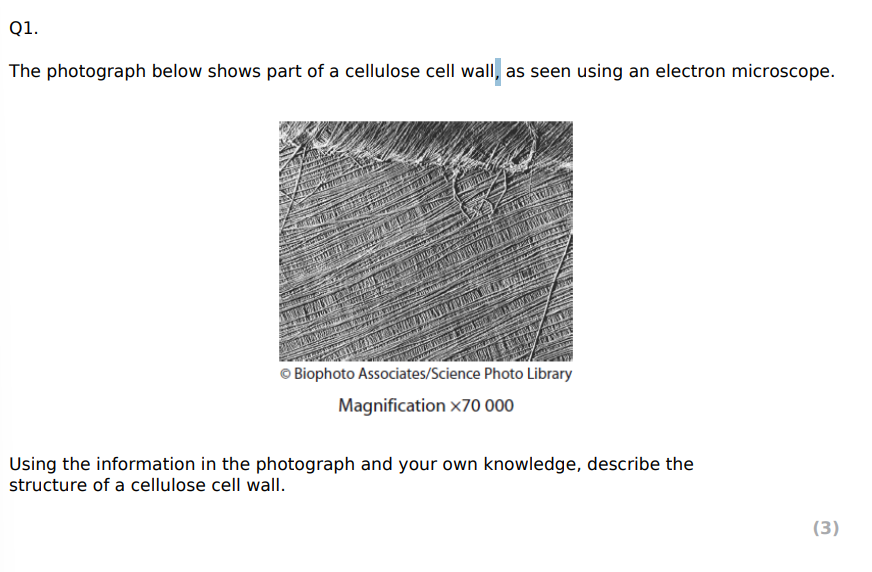

Name three structures that are present in prokaryotic cells but absent in animal cells. (3)
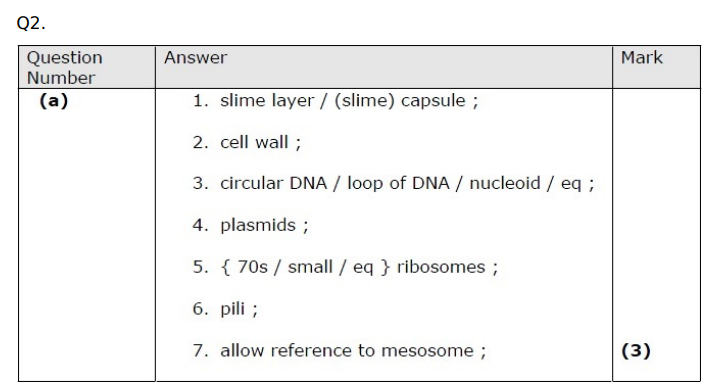
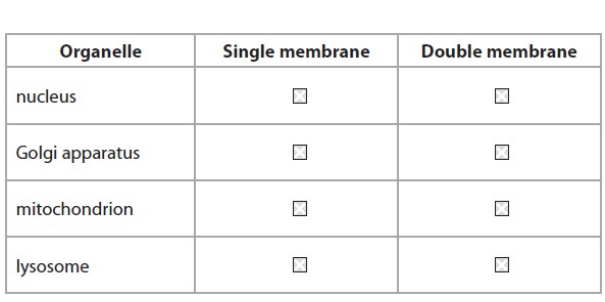
nmgl
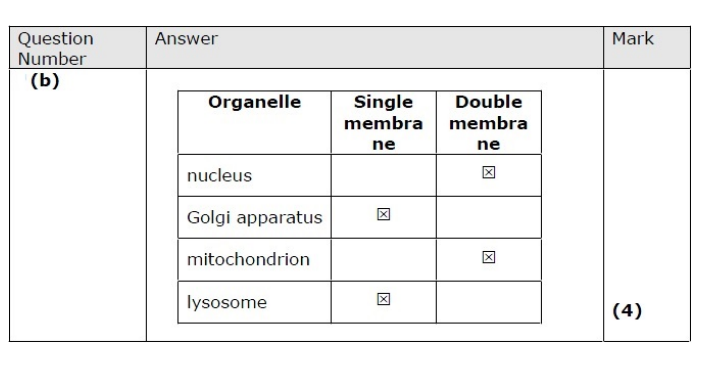

what even is calcium pectate
B
C
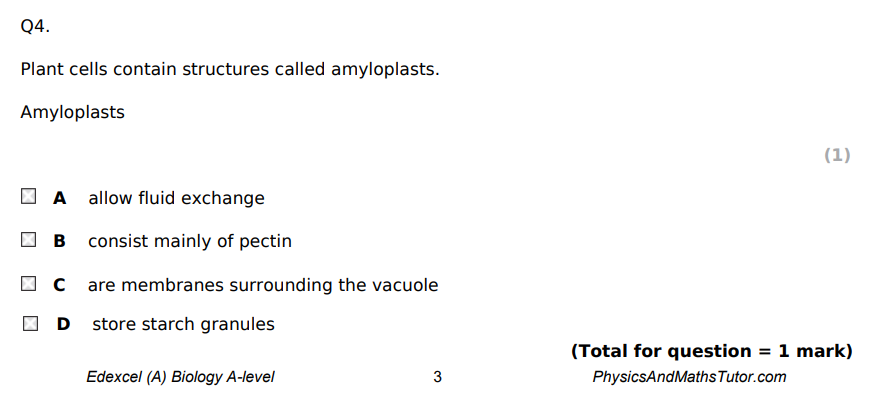
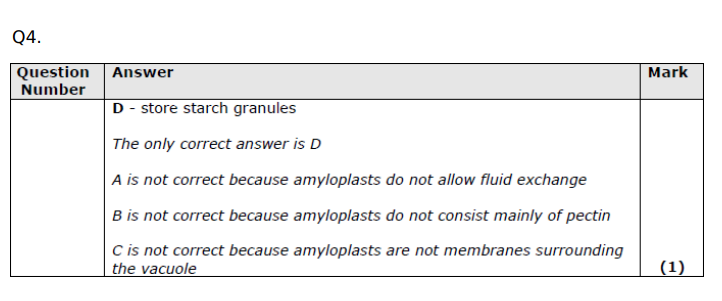
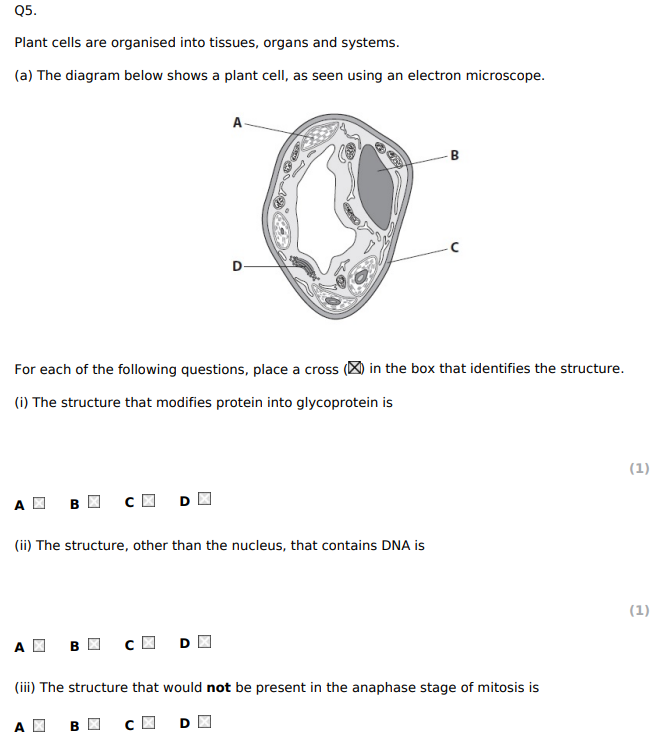
D
A
B
Describe the functions of xylem. (2)

Describe the structure of a cellulose microfibril. (4)
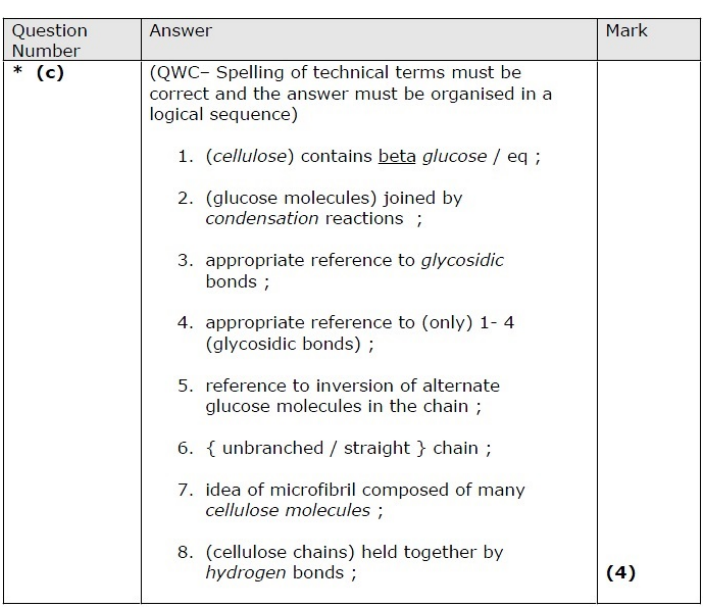
Explain the effects of a shortage of magnesium ions on a plant. (3)
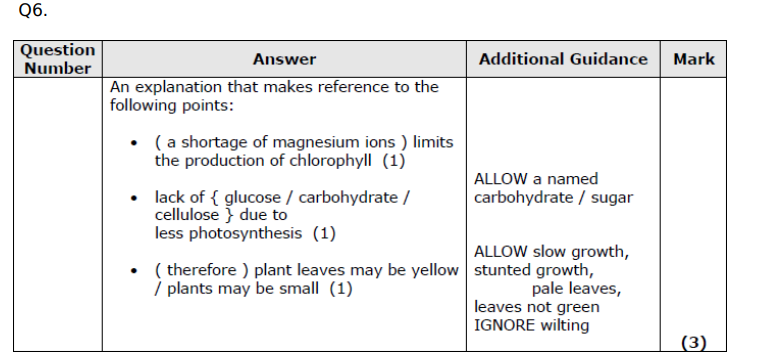
Why does the food store in seeds contain starch rather than cellulose? (1)
starch is branched and supplies energy more quickly than cellulose
Explain why starch must be broken down before it can be used by the cells of the gro plant.

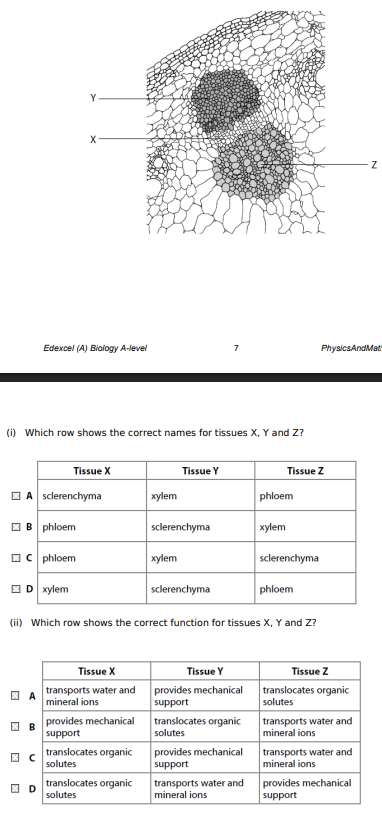
B C
Explain the relationship between the structure and functions of a granum in photosynthesis. (3)
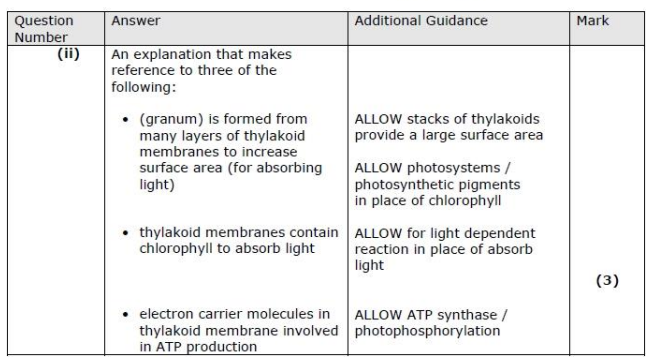
Describe how nitrate ions are transported from the root to the leaves. (2)

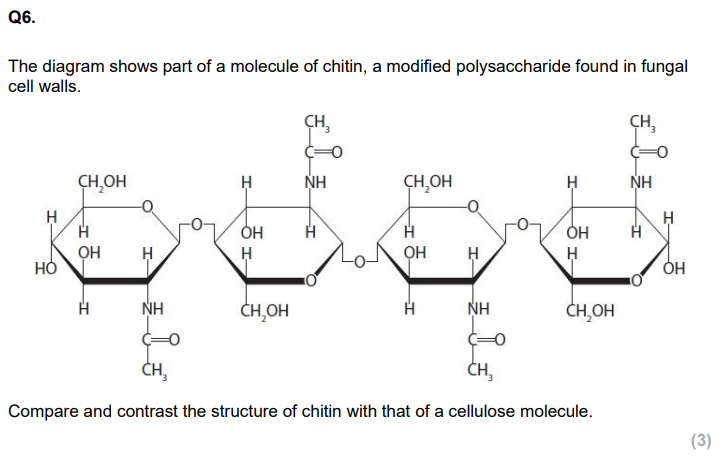
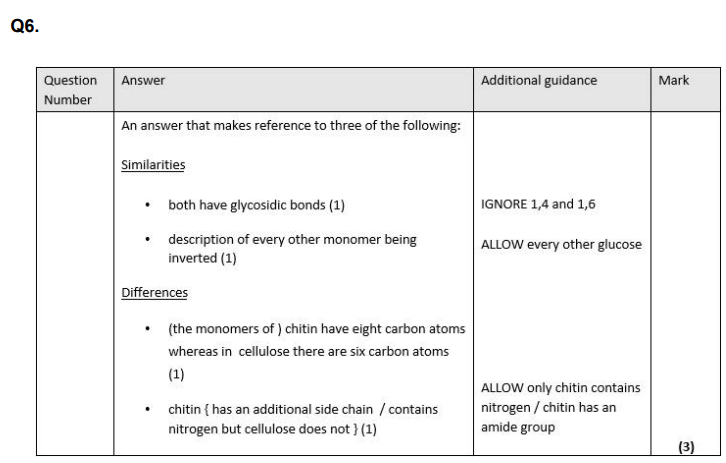
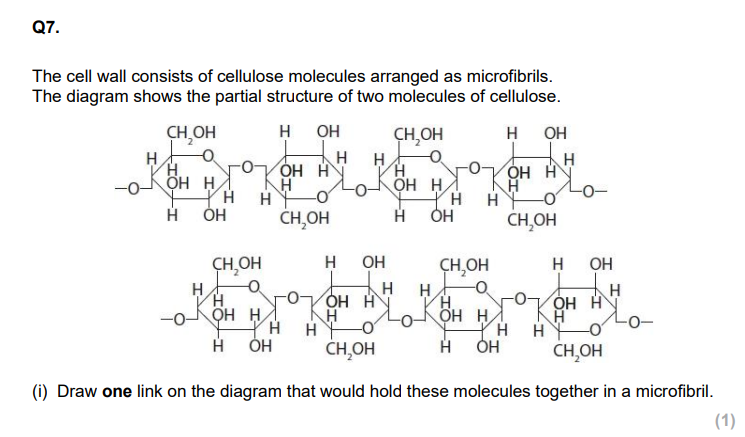
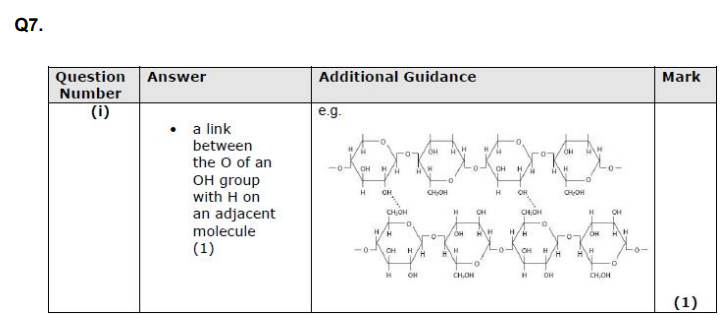
Compare and contrast the structure of cellulose and amylopectin. (3)
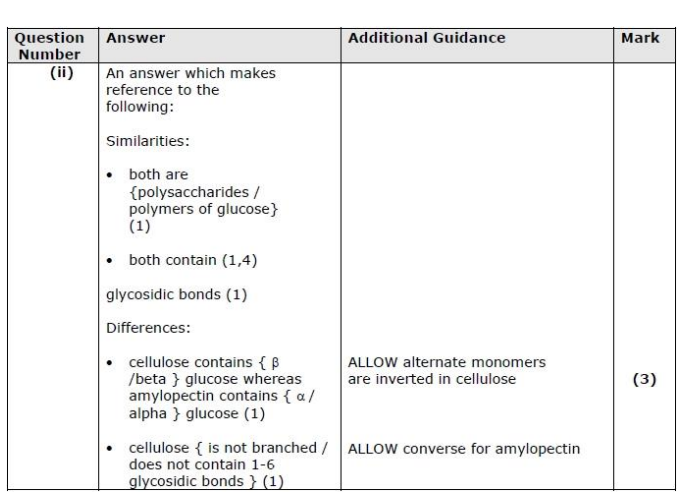
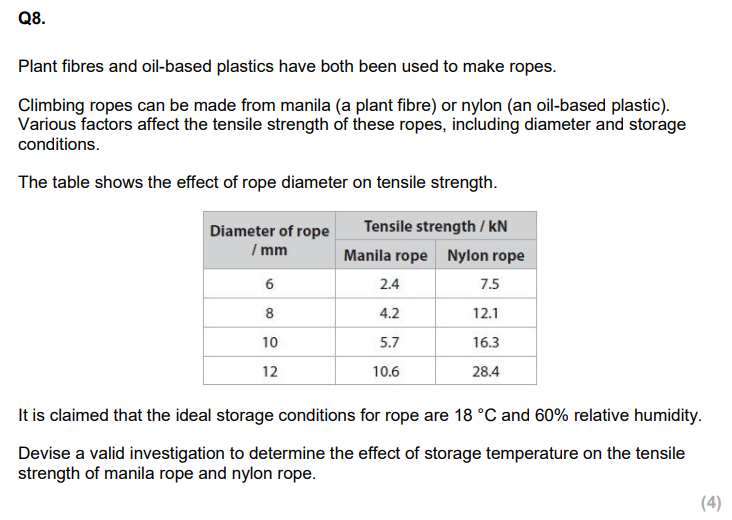
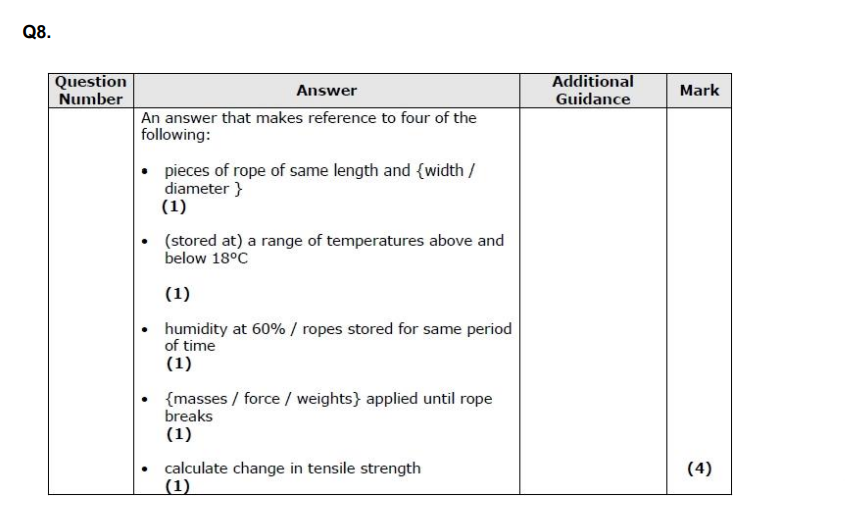
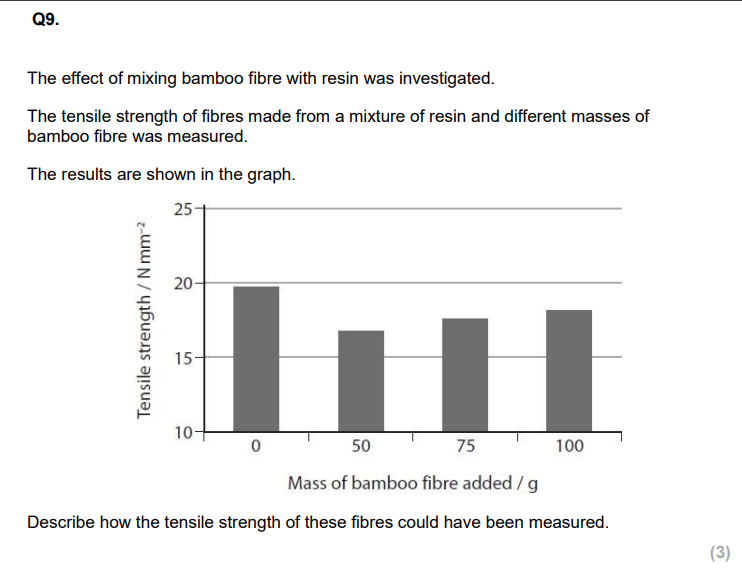
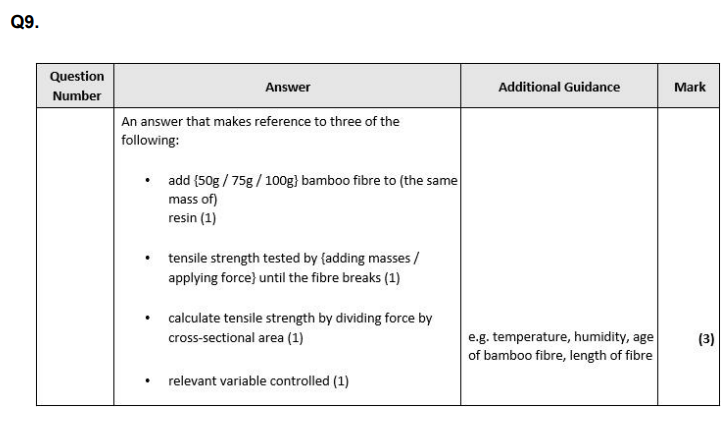
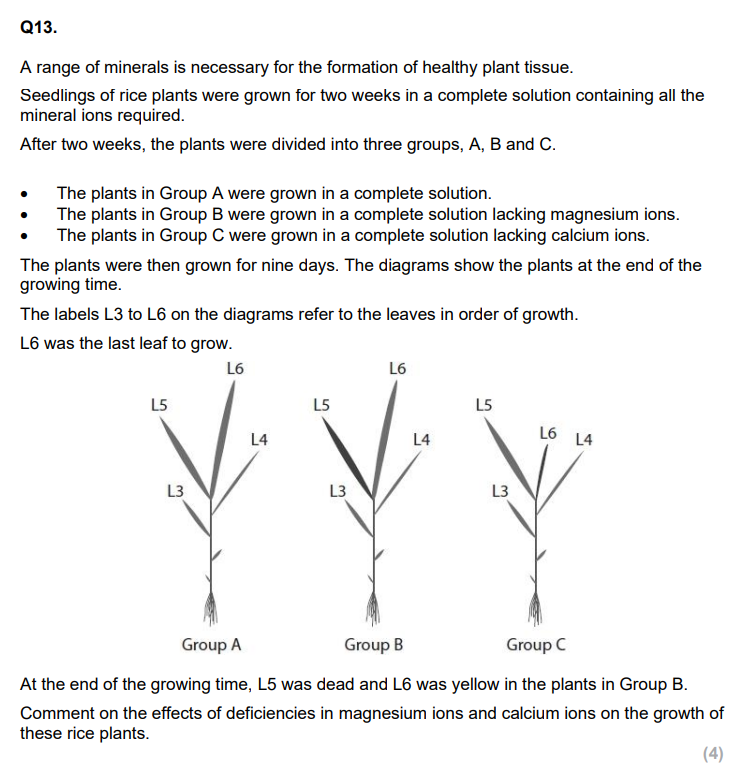
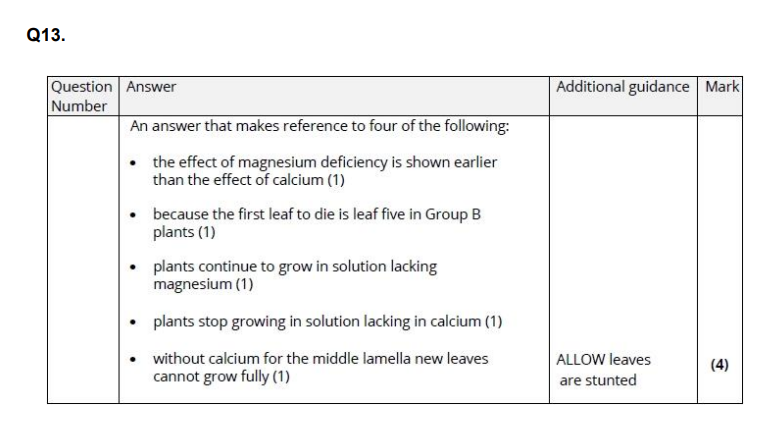
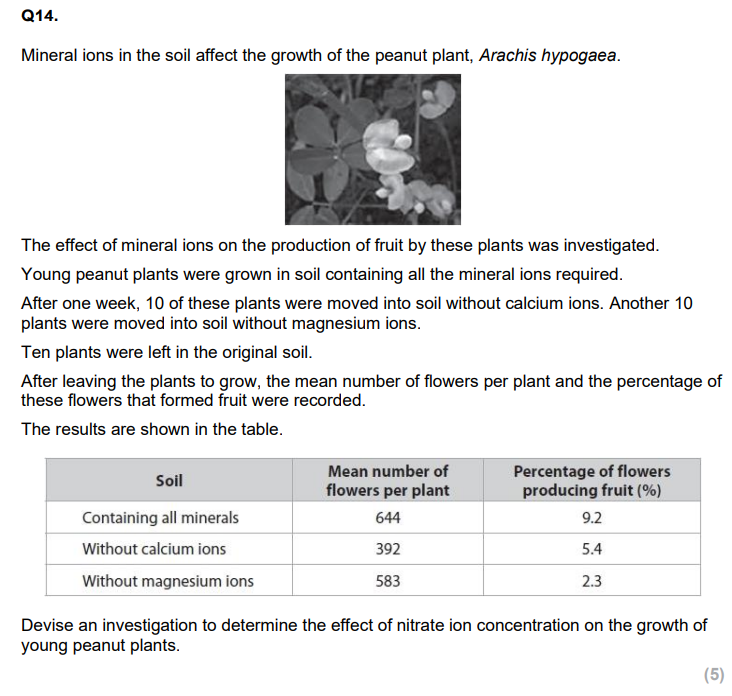
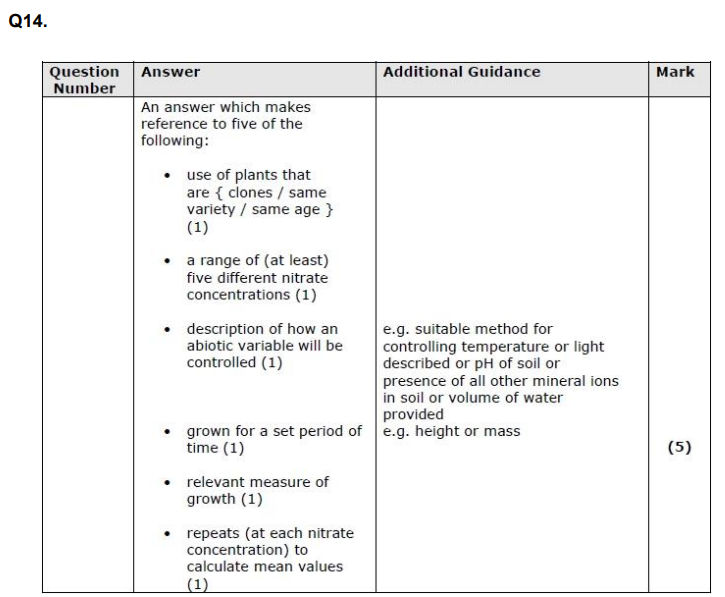
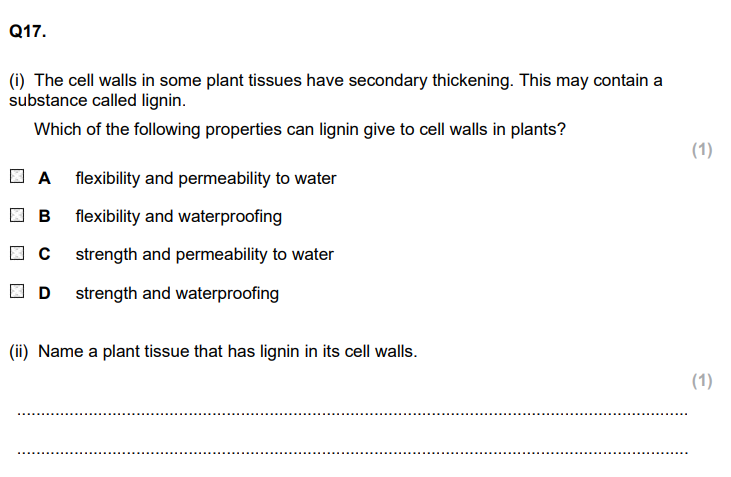
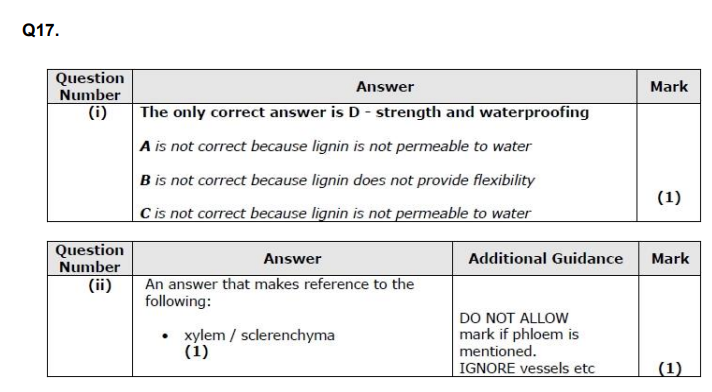
Explain the role of the middle lamella when a plant cell completes mitosis. (2)
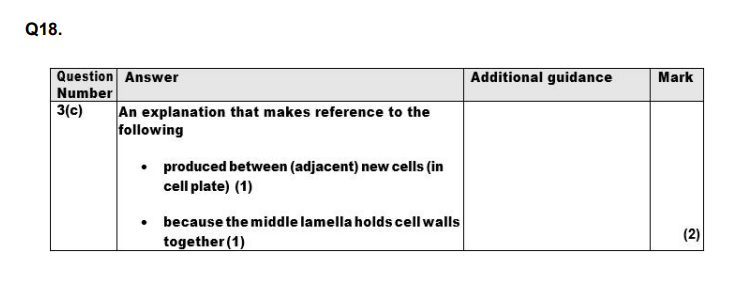
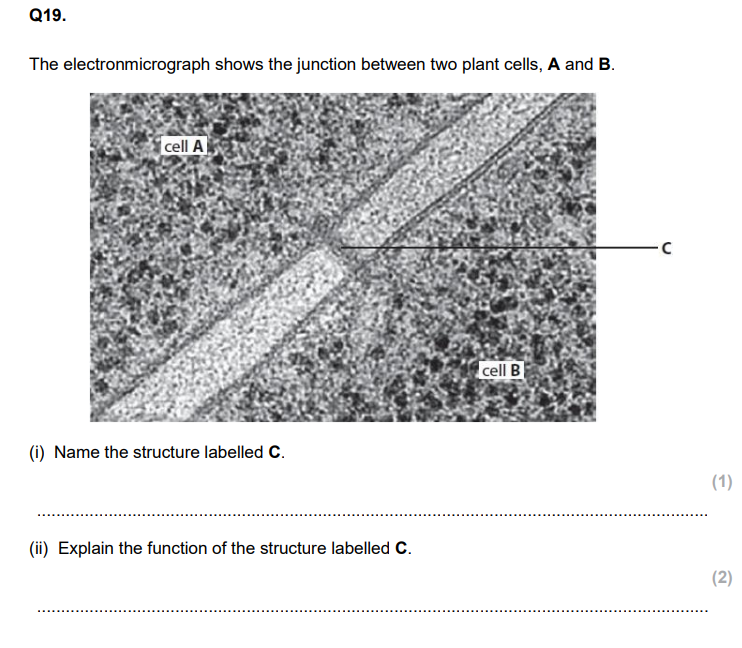

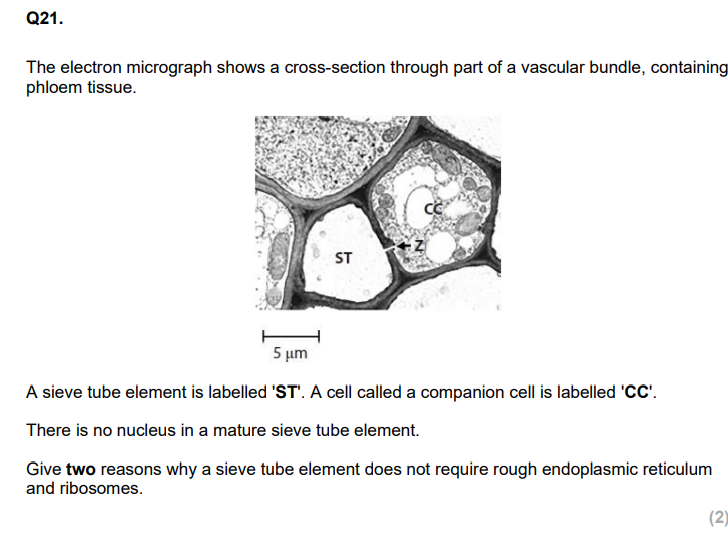
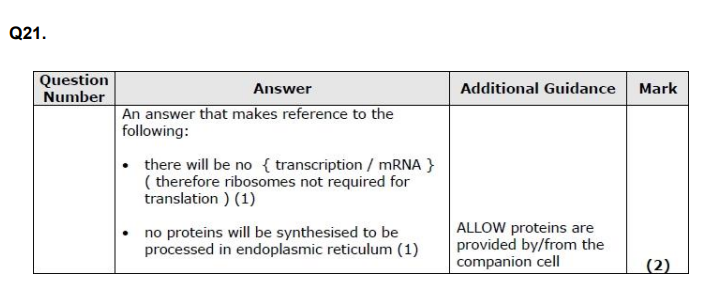
Describe the structure of starch. (3)
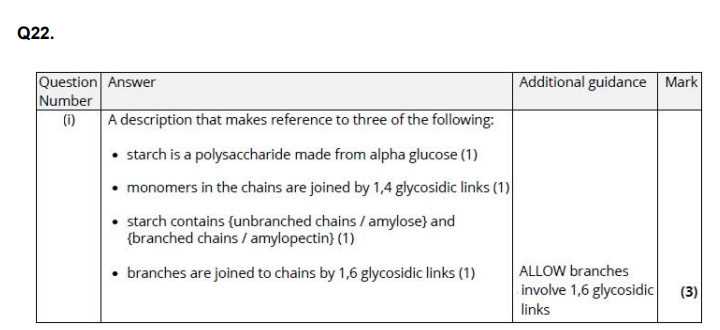
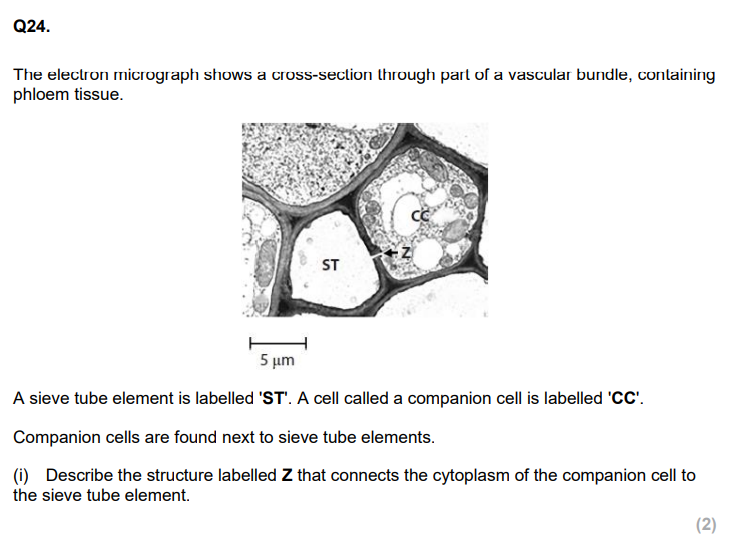
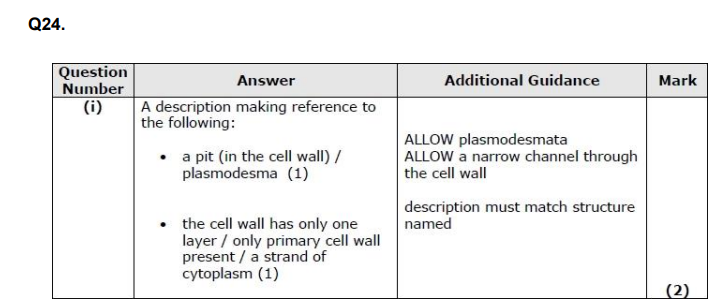
The electron micrograph shows a difference in the number of mitochondria in the sieve tube element and in the companion cell. Explain the difference in the number of mitochondria. (3)
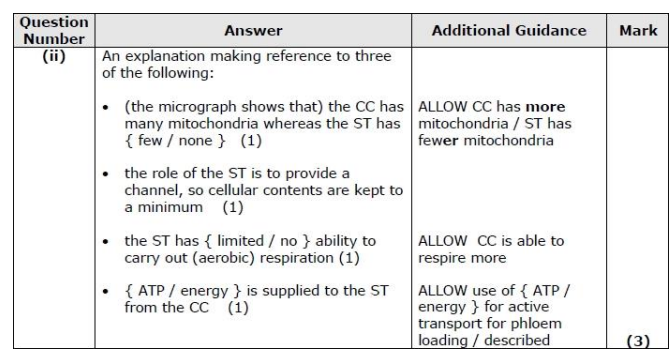
State what is meant by the term tensile strength. (1)

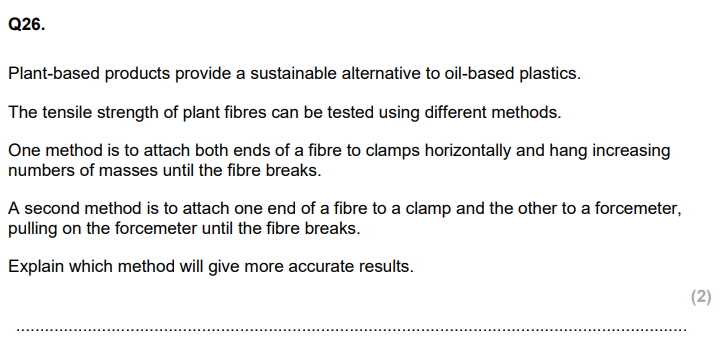
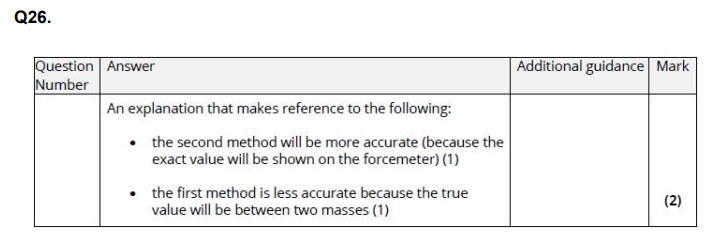
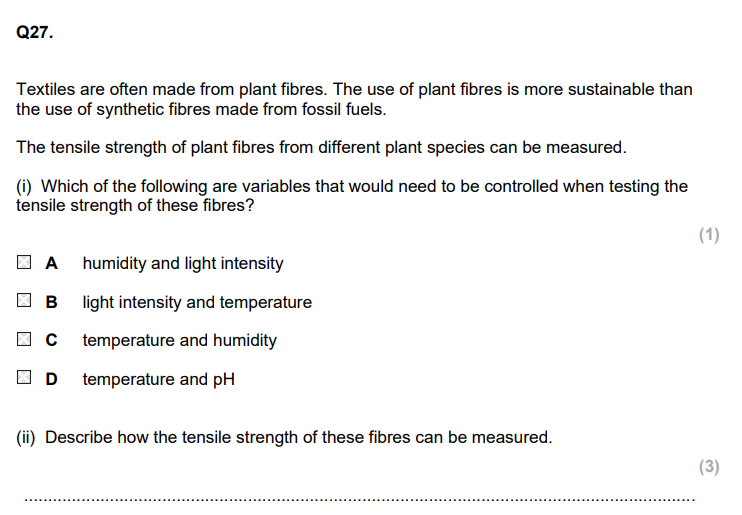
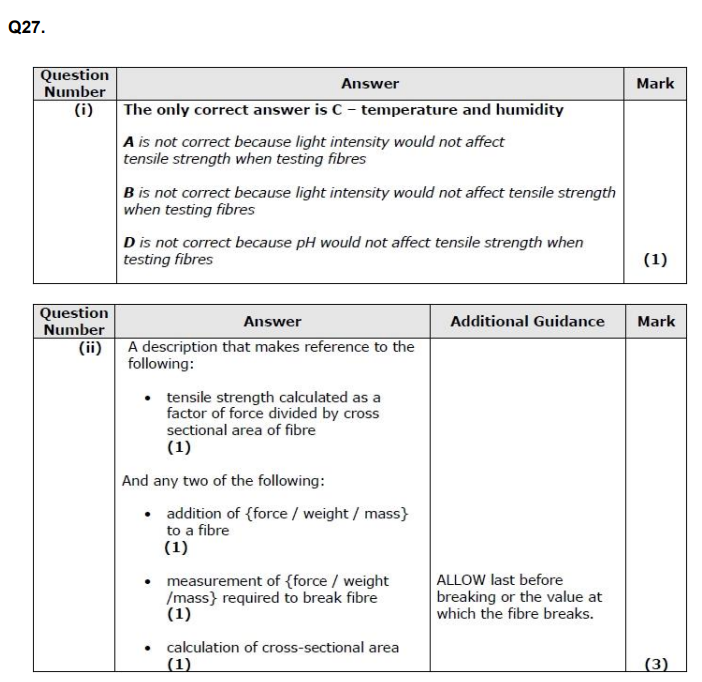
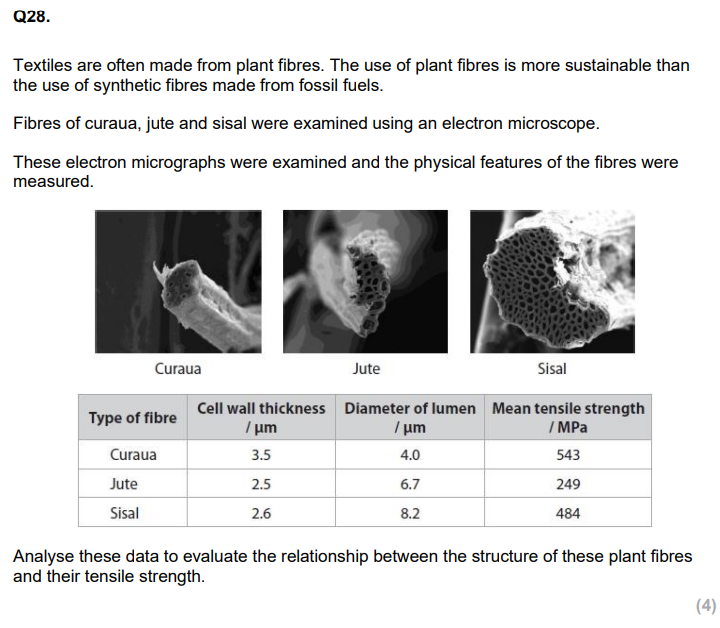
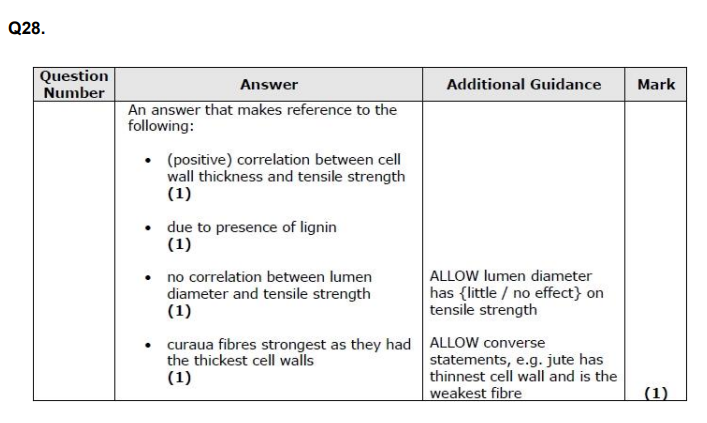
Explain how the structure and properties of starch are related to its function as a storage molecule. (3)
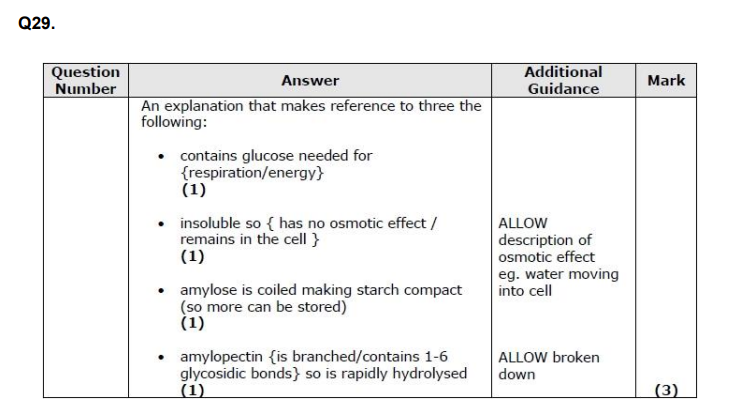
Describe the positions in the stem of those tissues that contain lignin. (2)
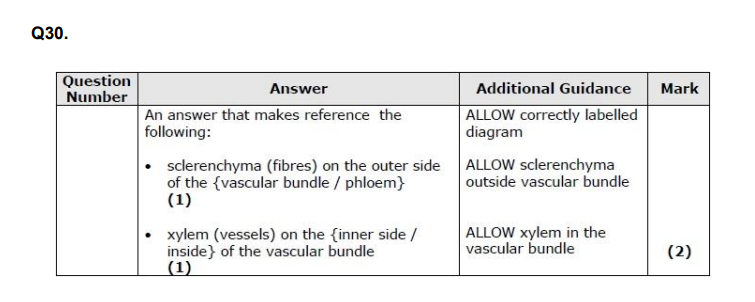
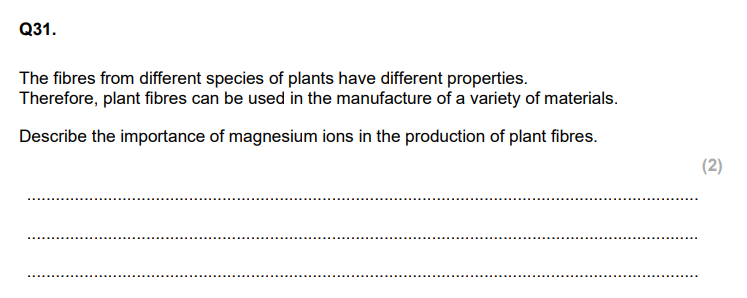
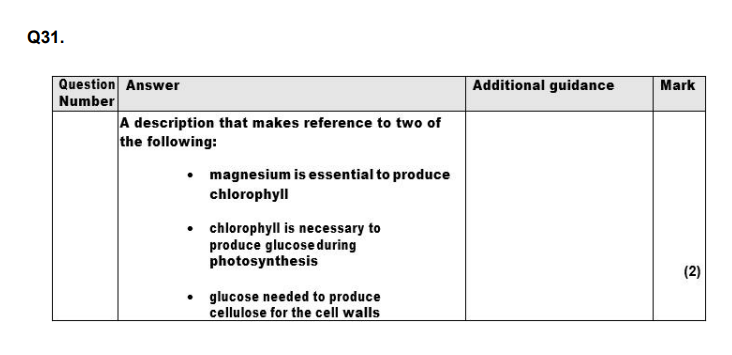
Kapok (Ceiba pentandra) is a tree. Kapok produces seed pods containing waxy fibres made of cellulose covered in lignin. These fibres are used as fillings for cushions.
Devise a method to find the relationship between the actual diameter and the tensile strength of kapok fibres. (6)
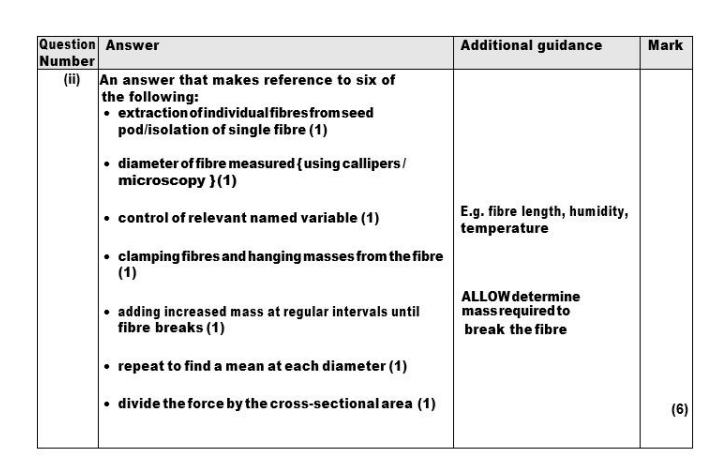
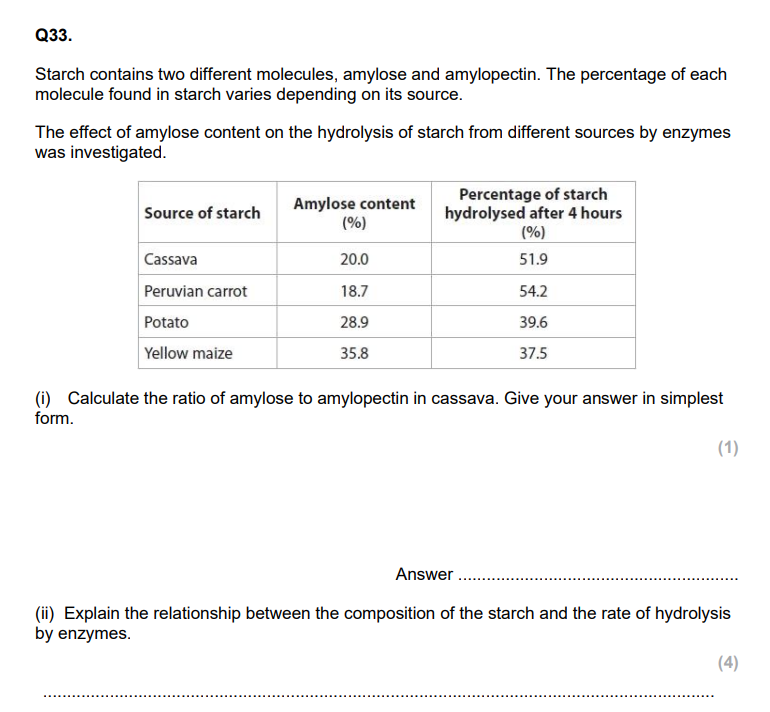
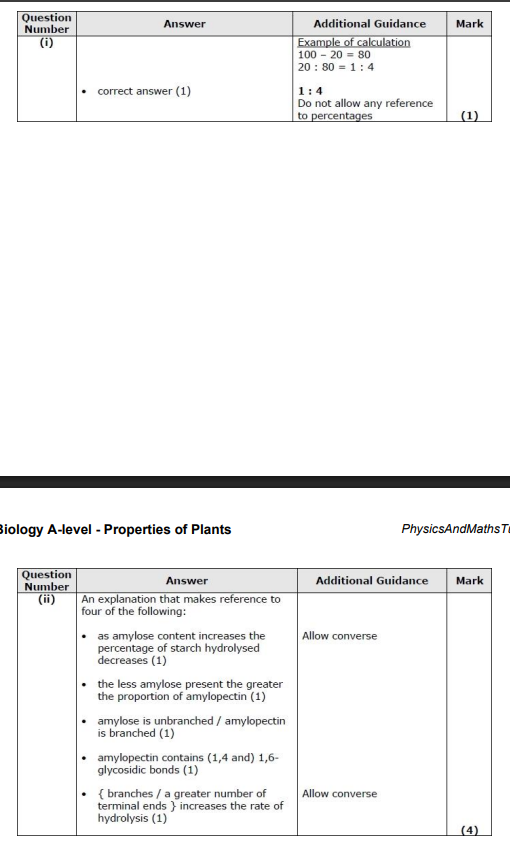

A
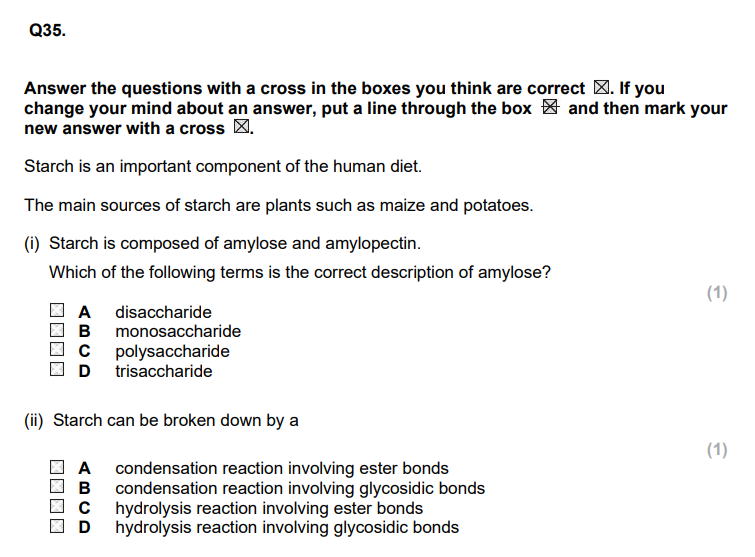
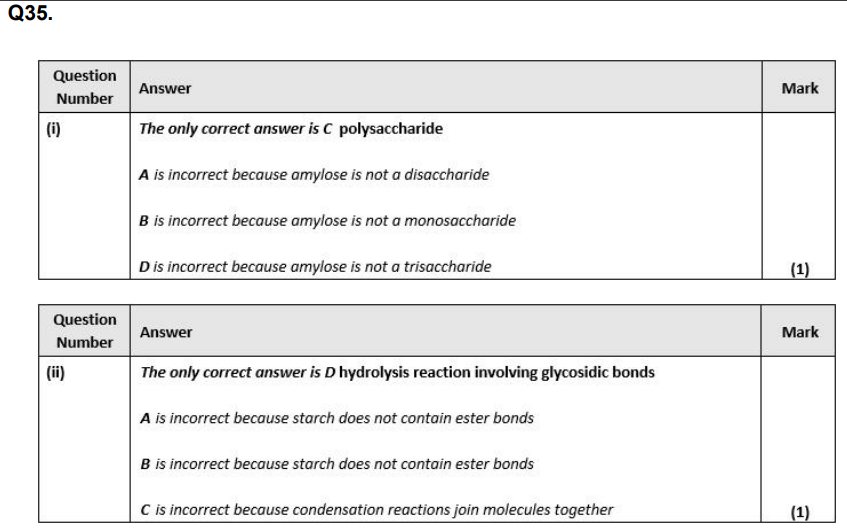
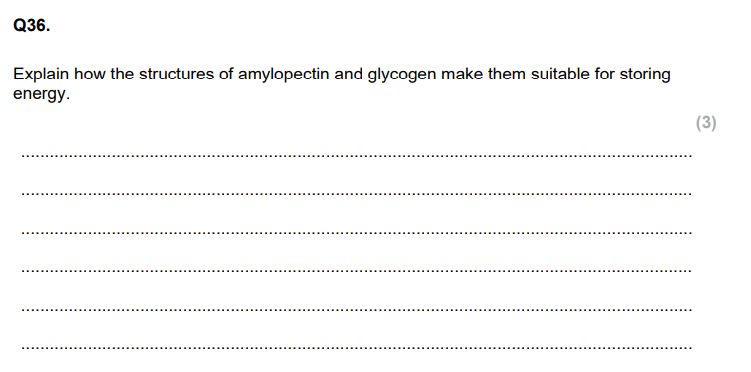
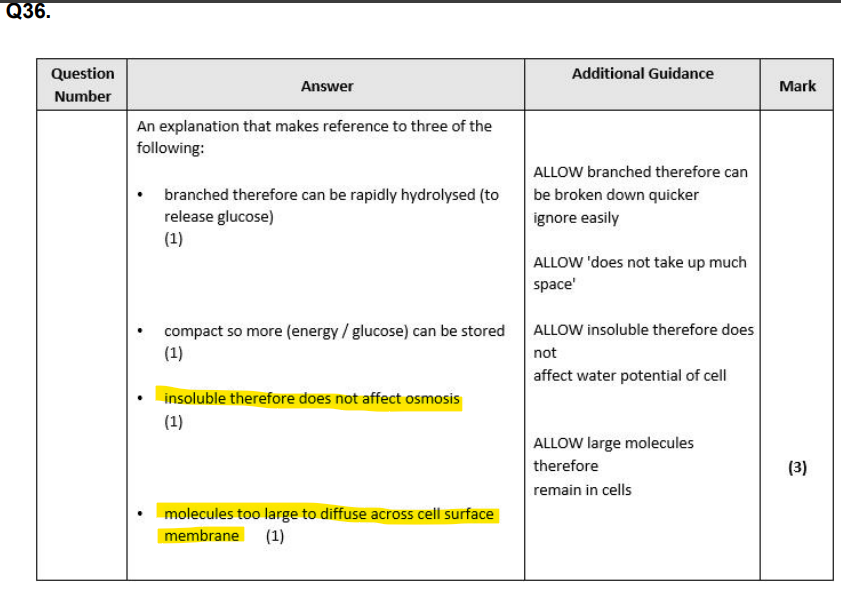
glycogen - what links? (1)
1,4/1,6
branched
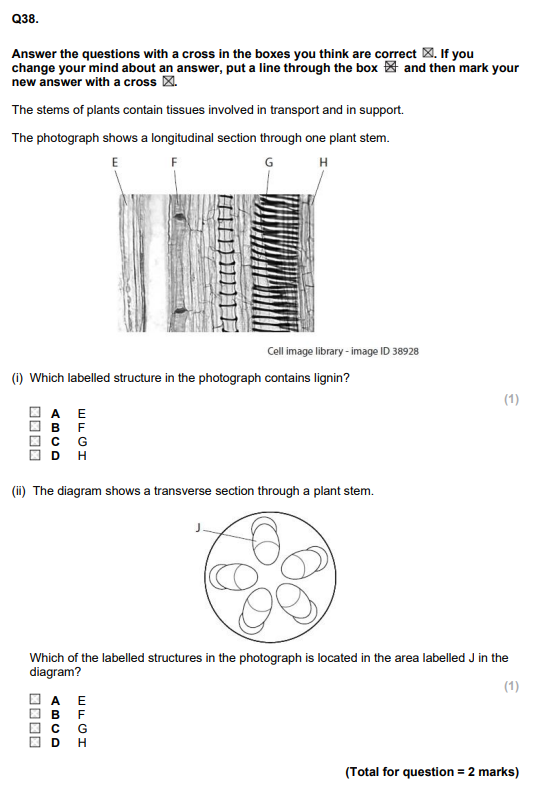
C
B
look into this more tho